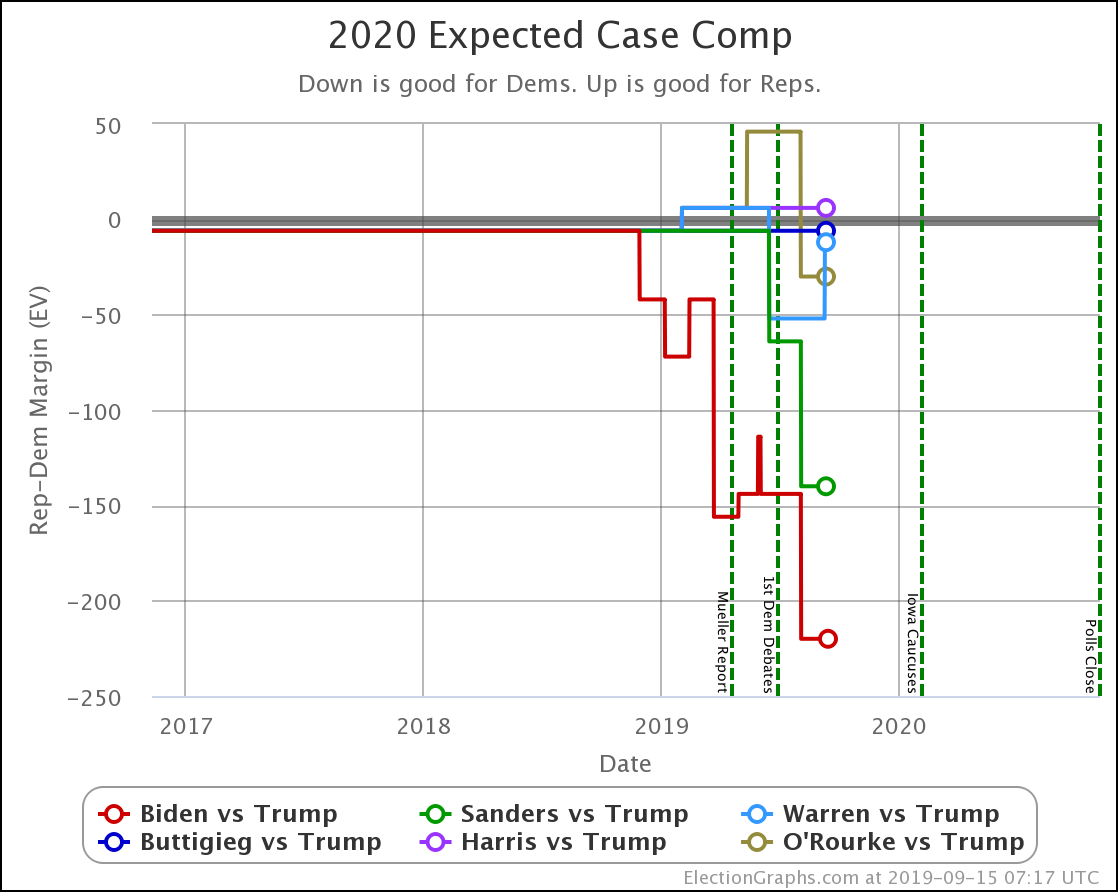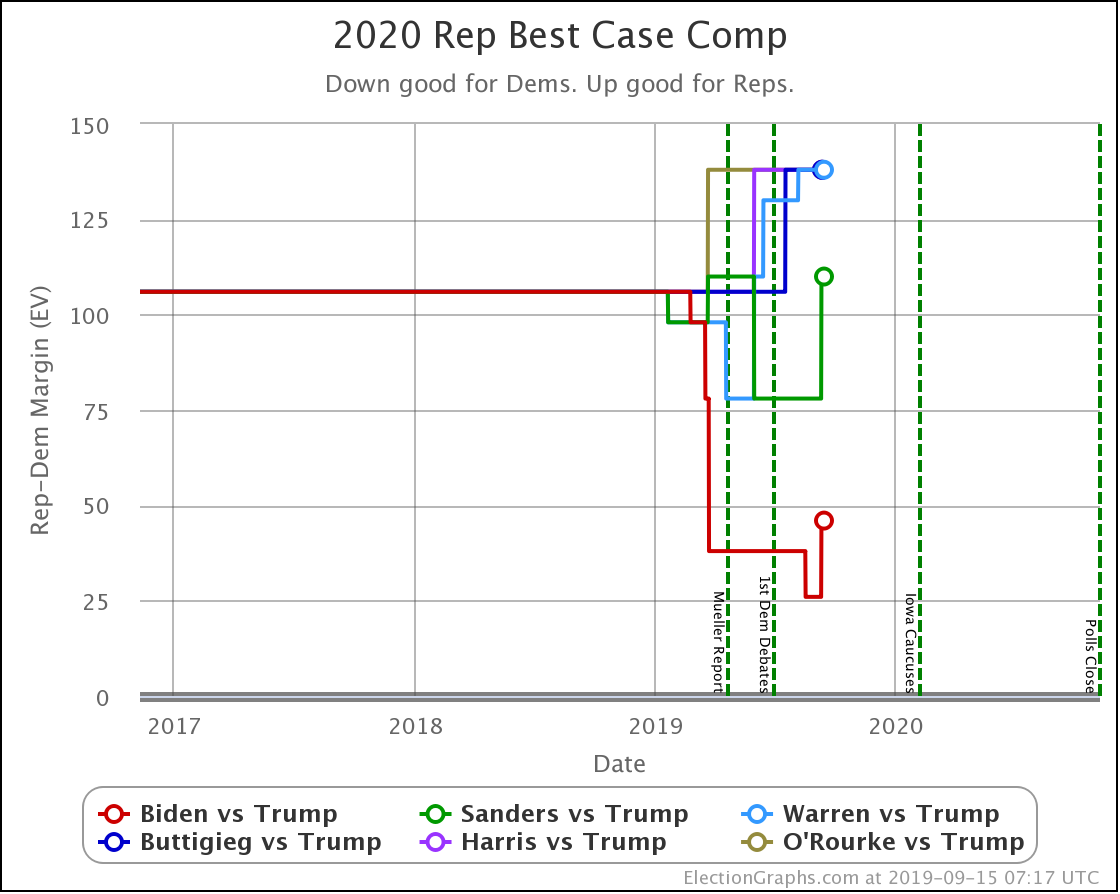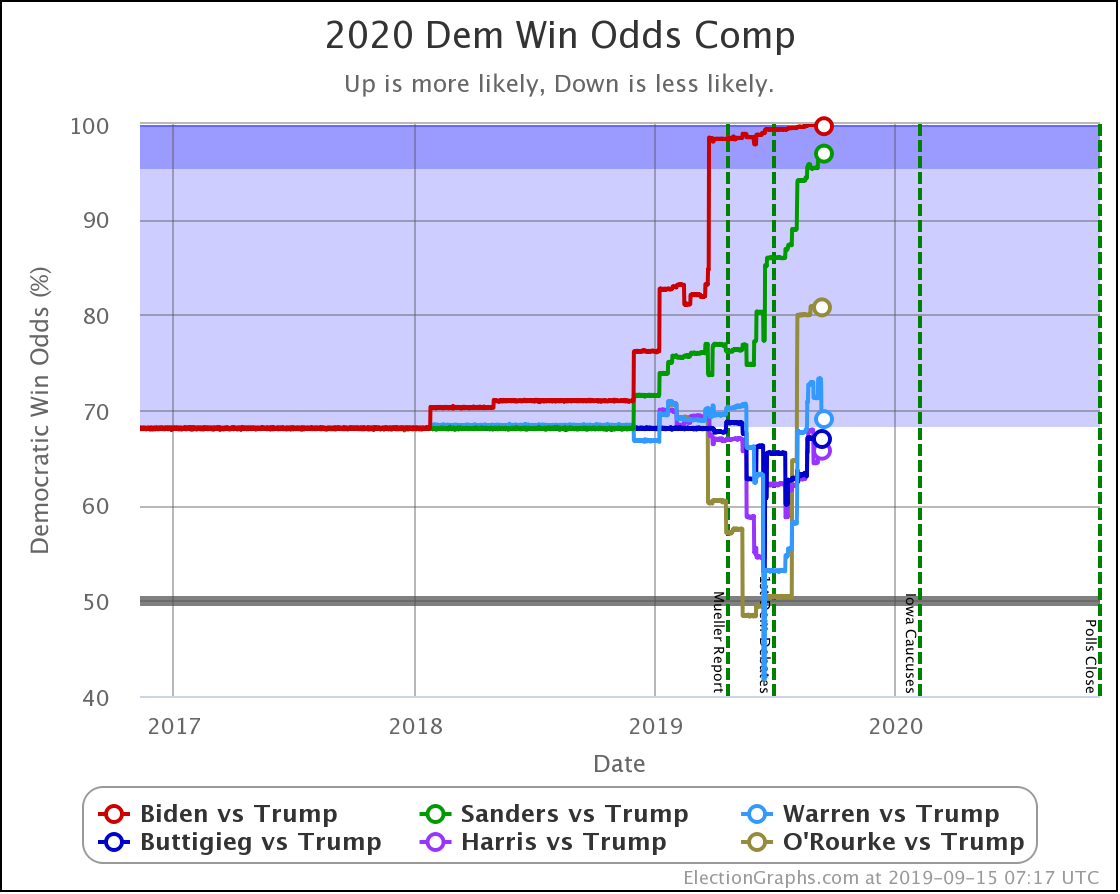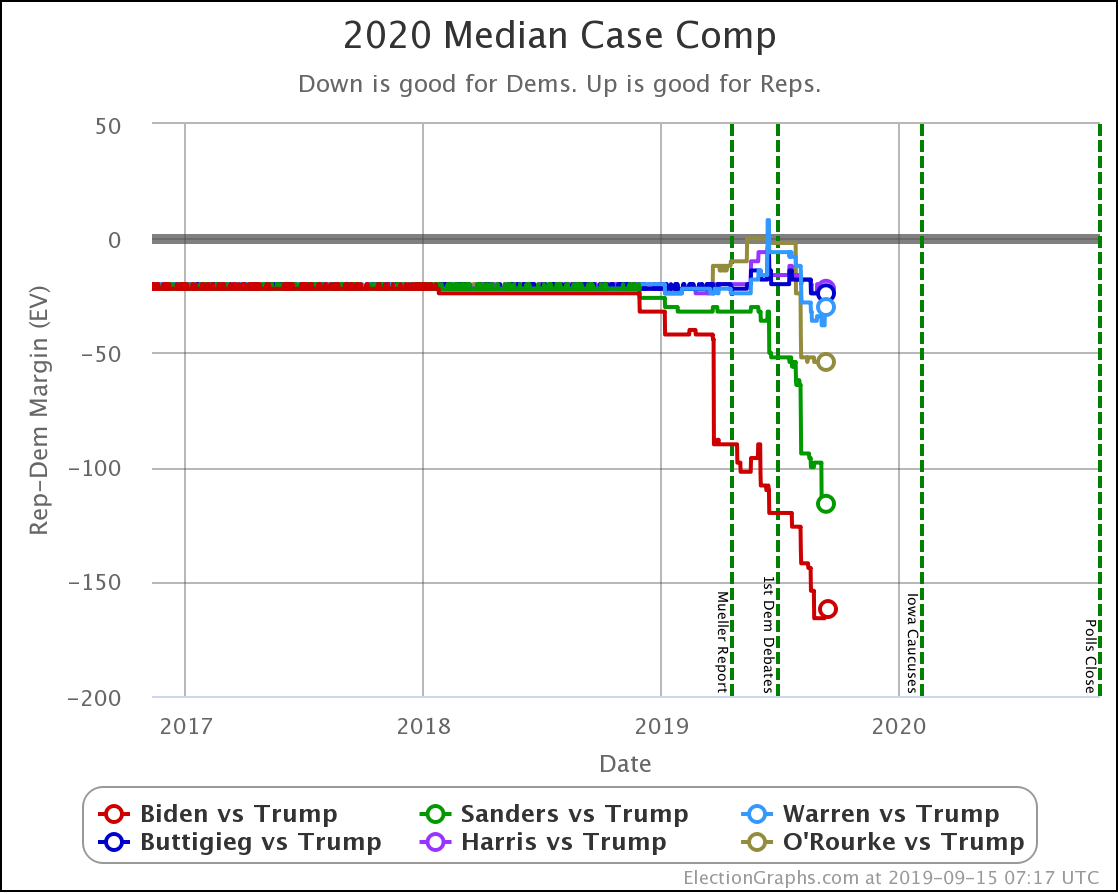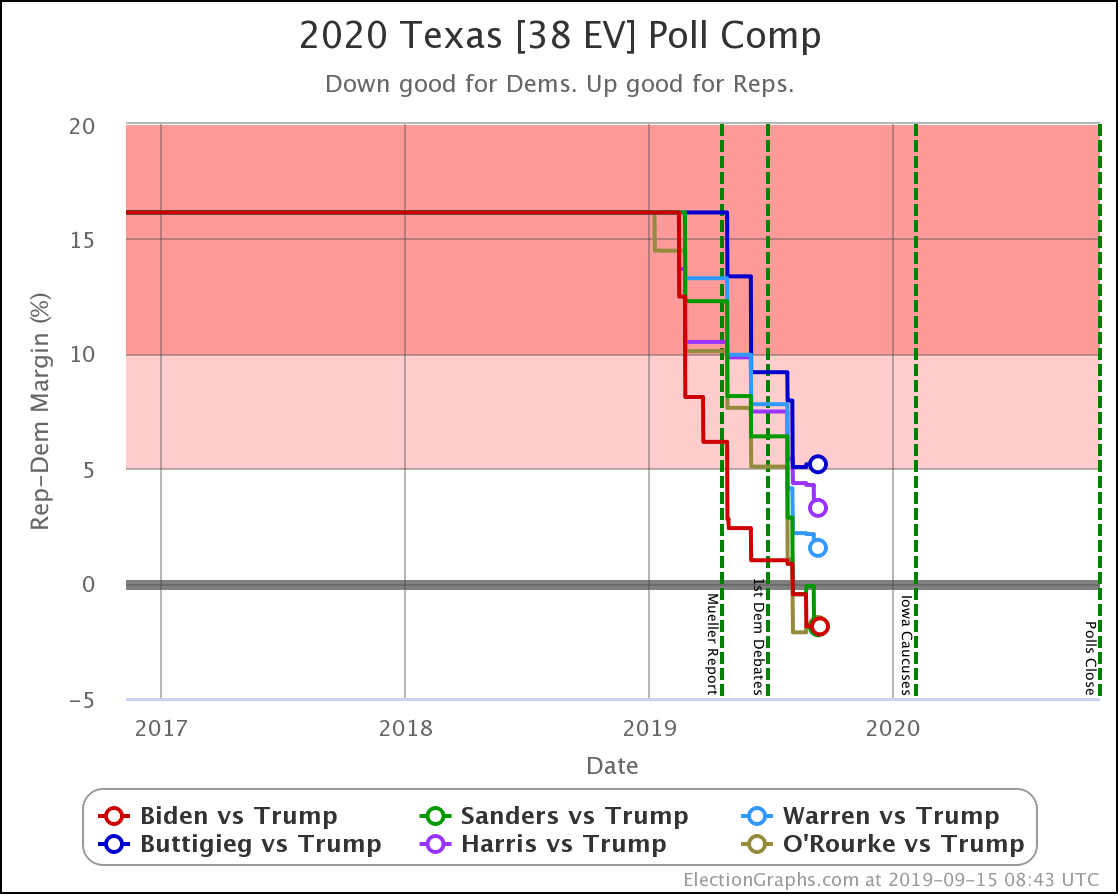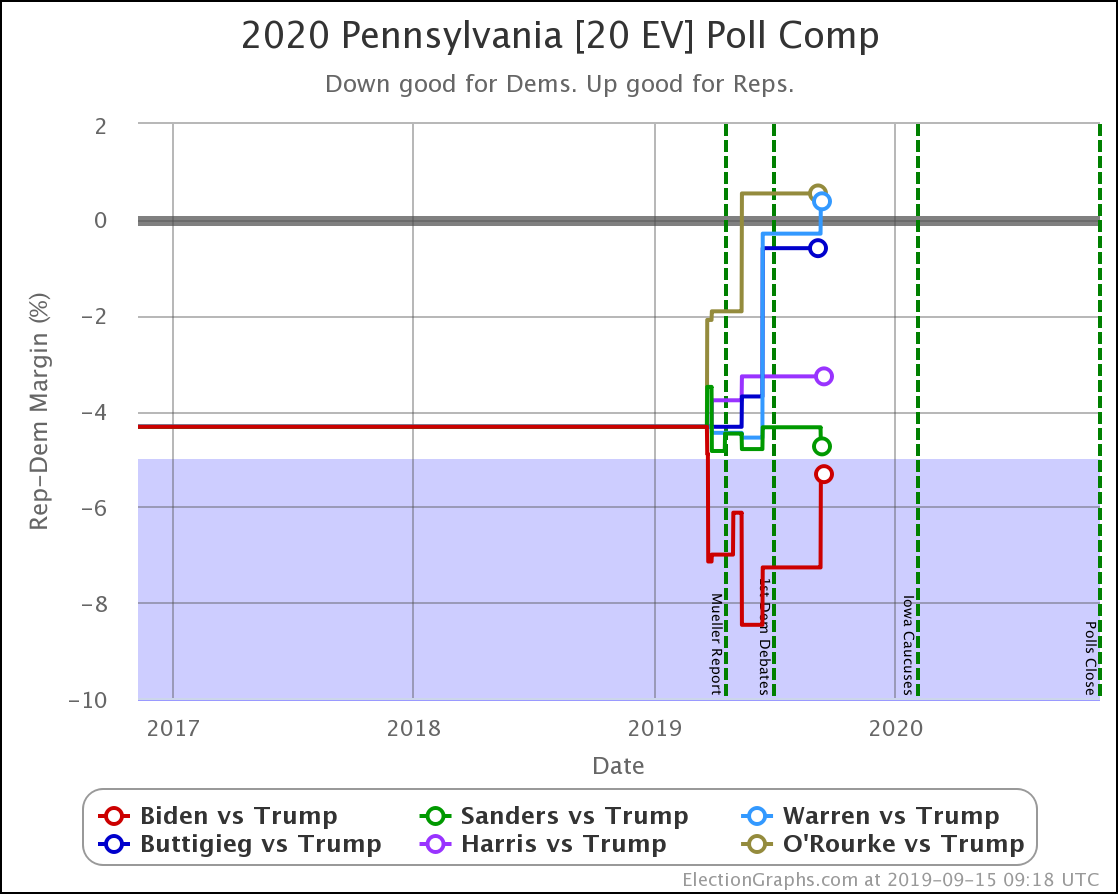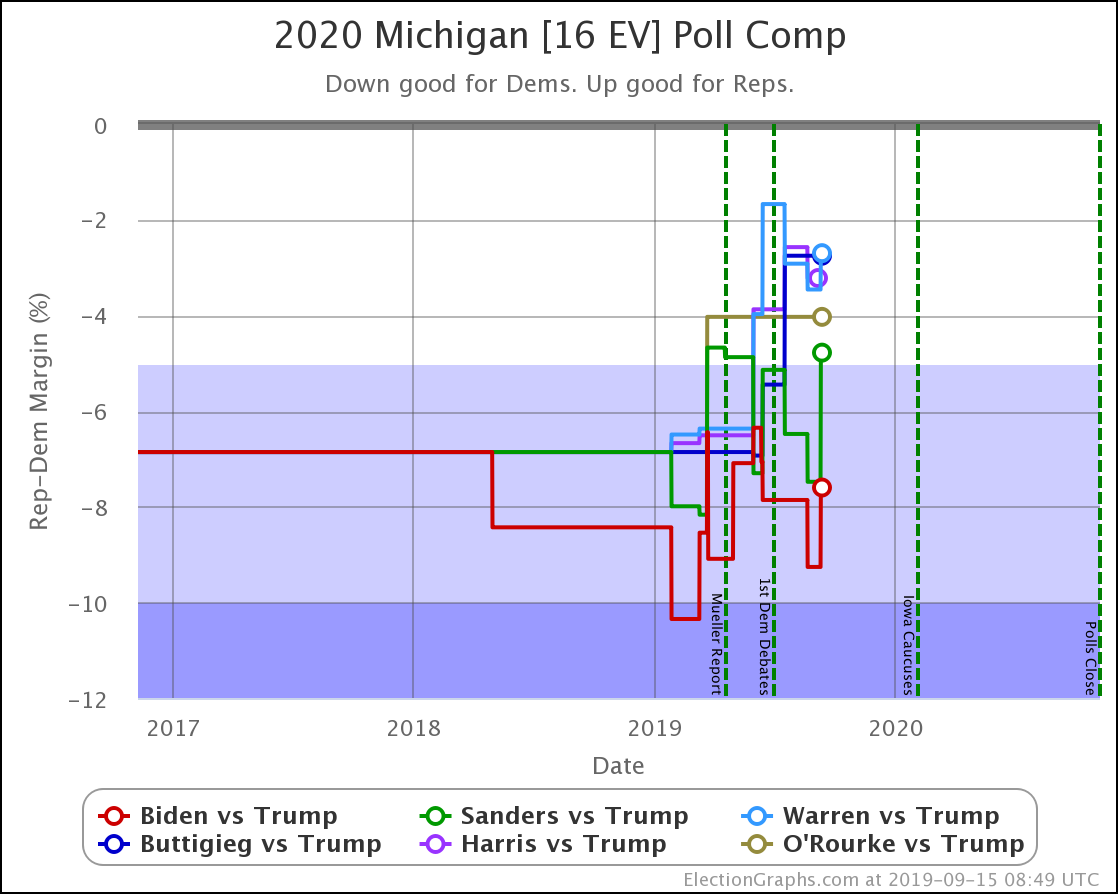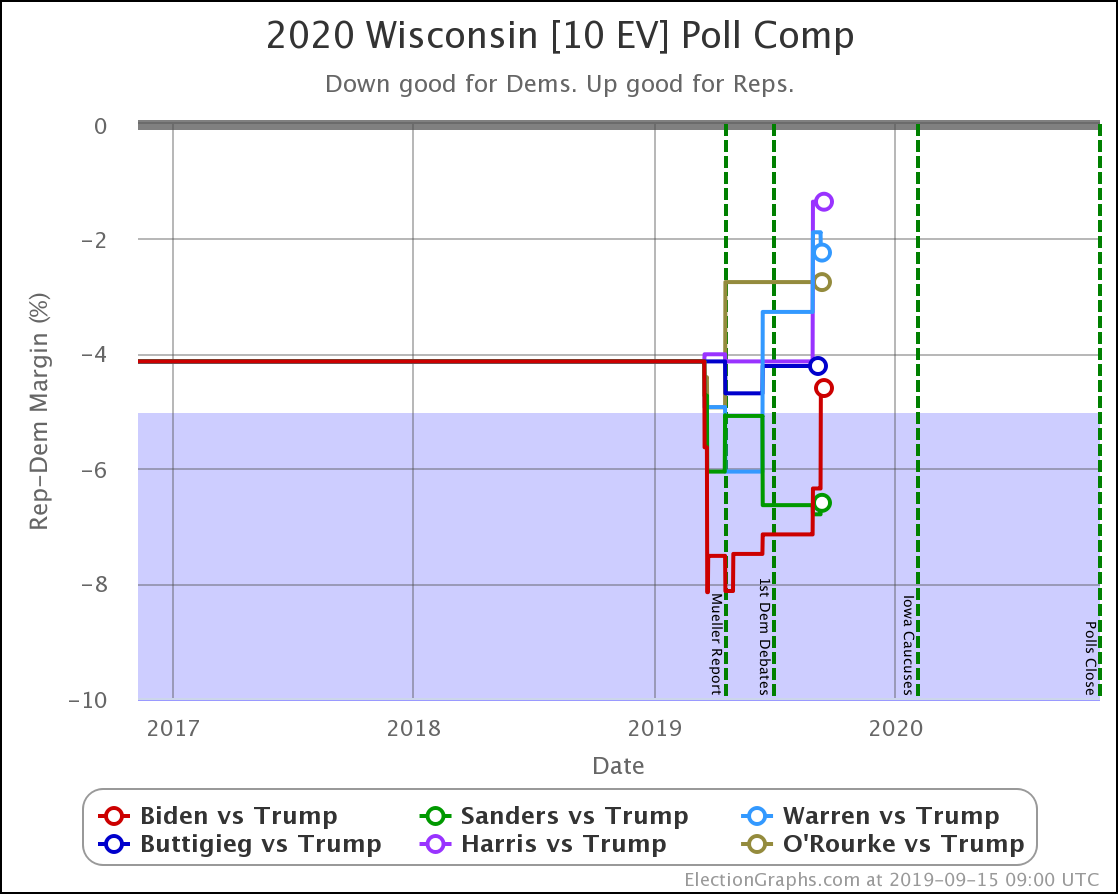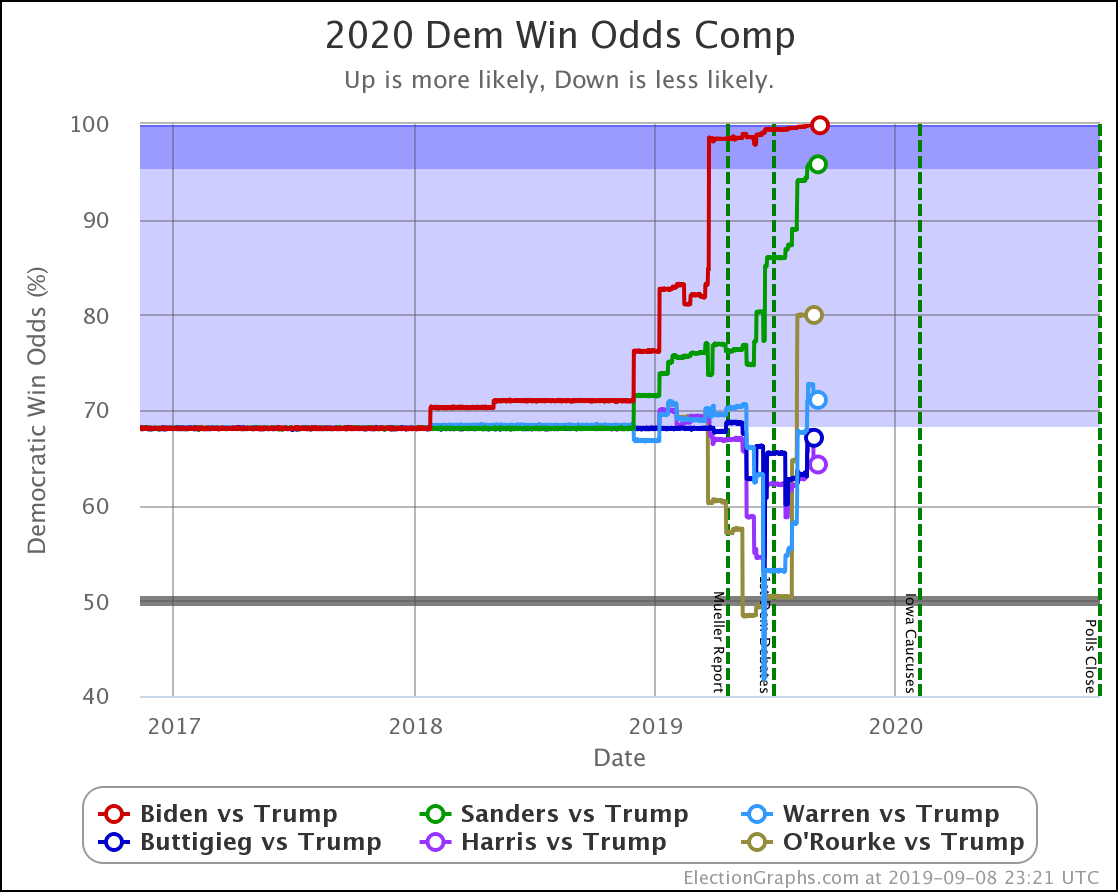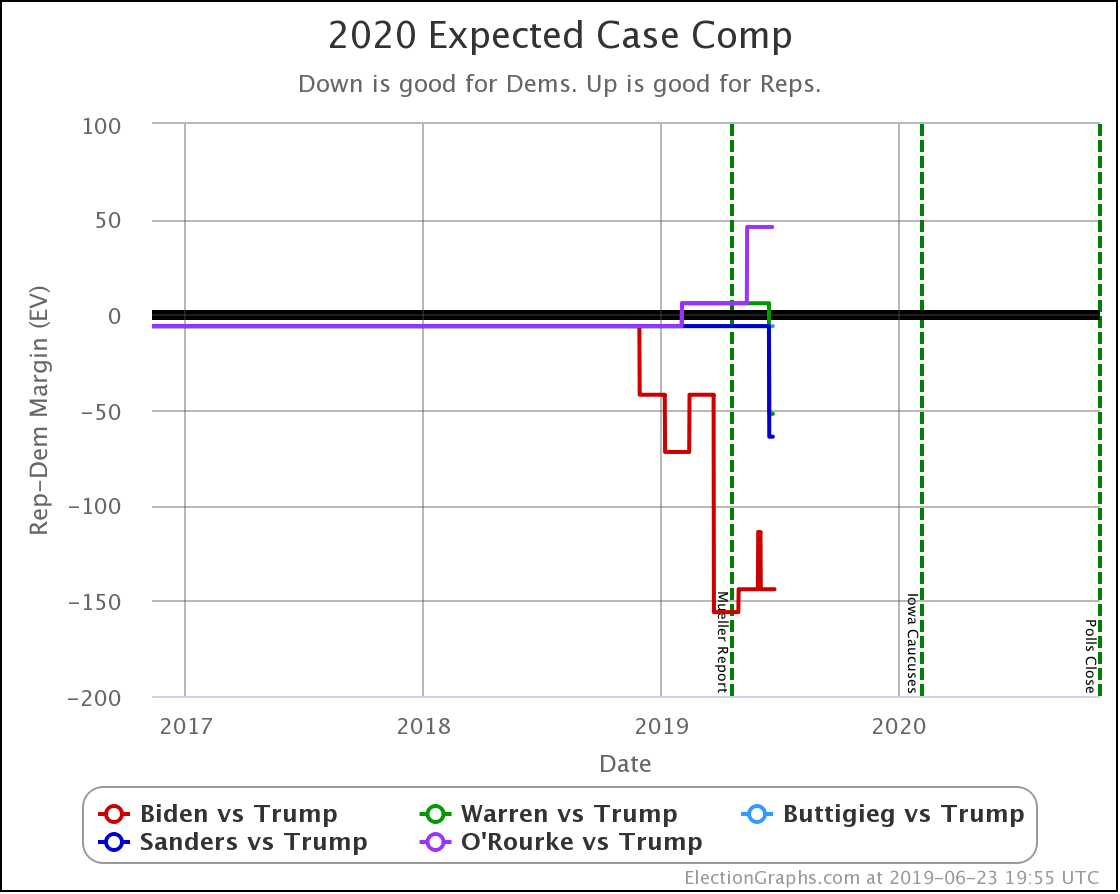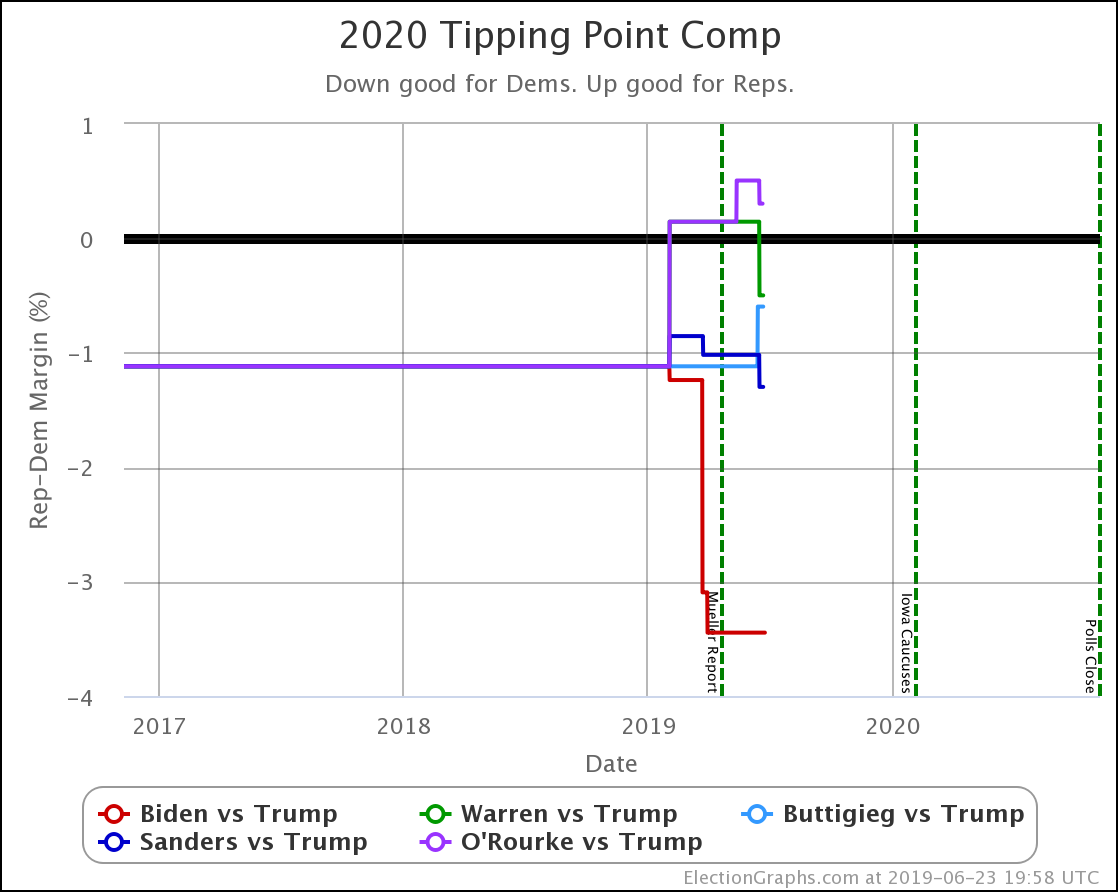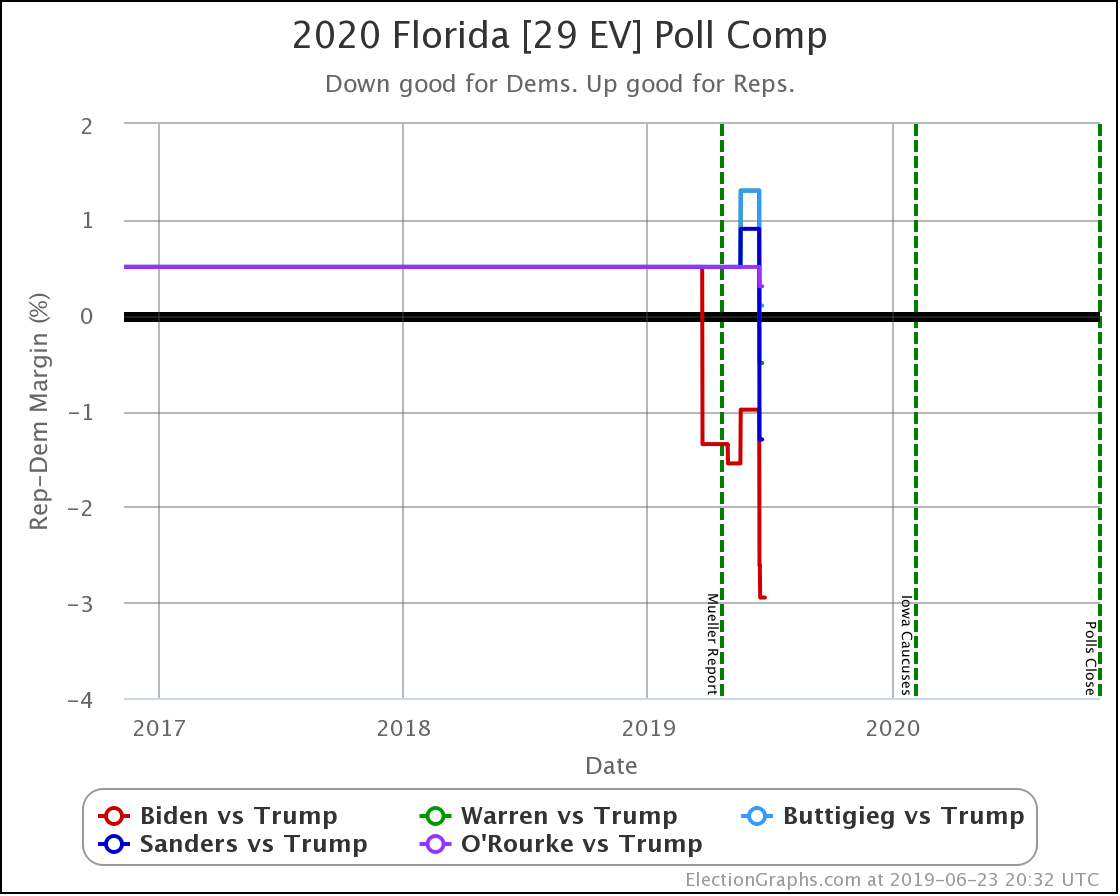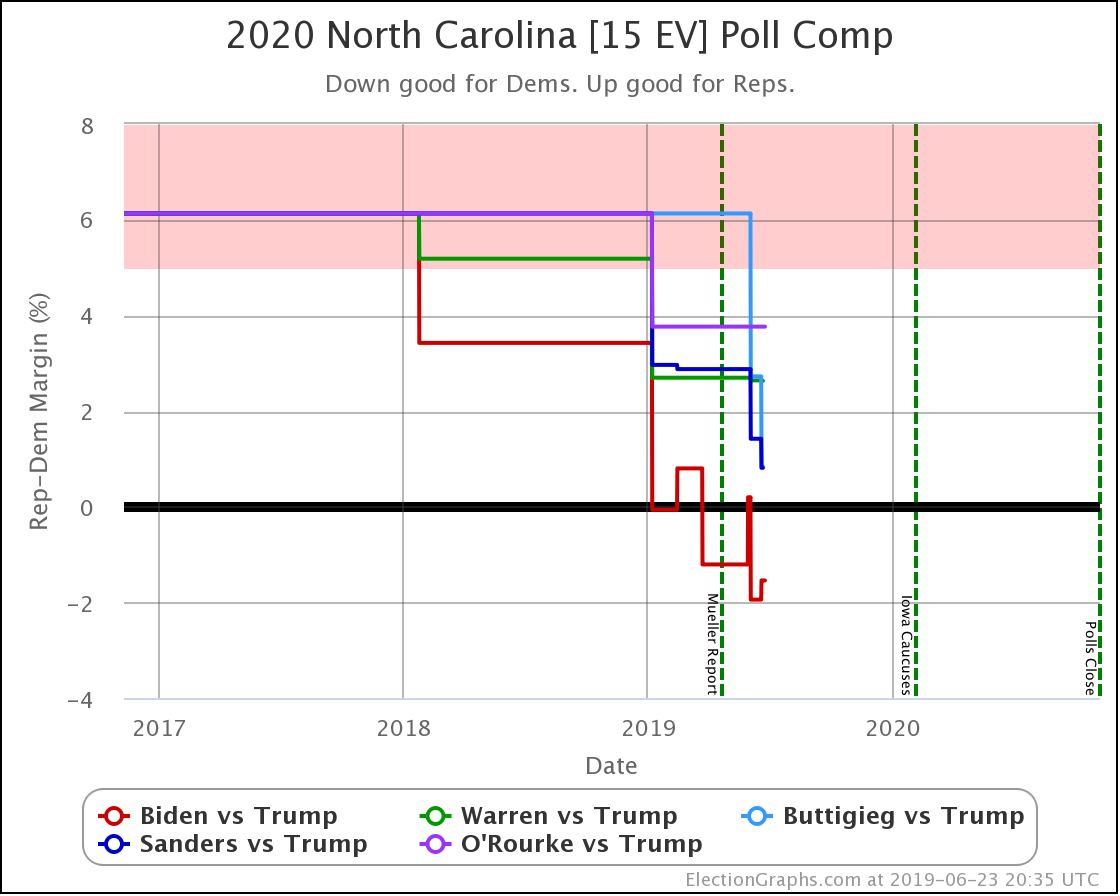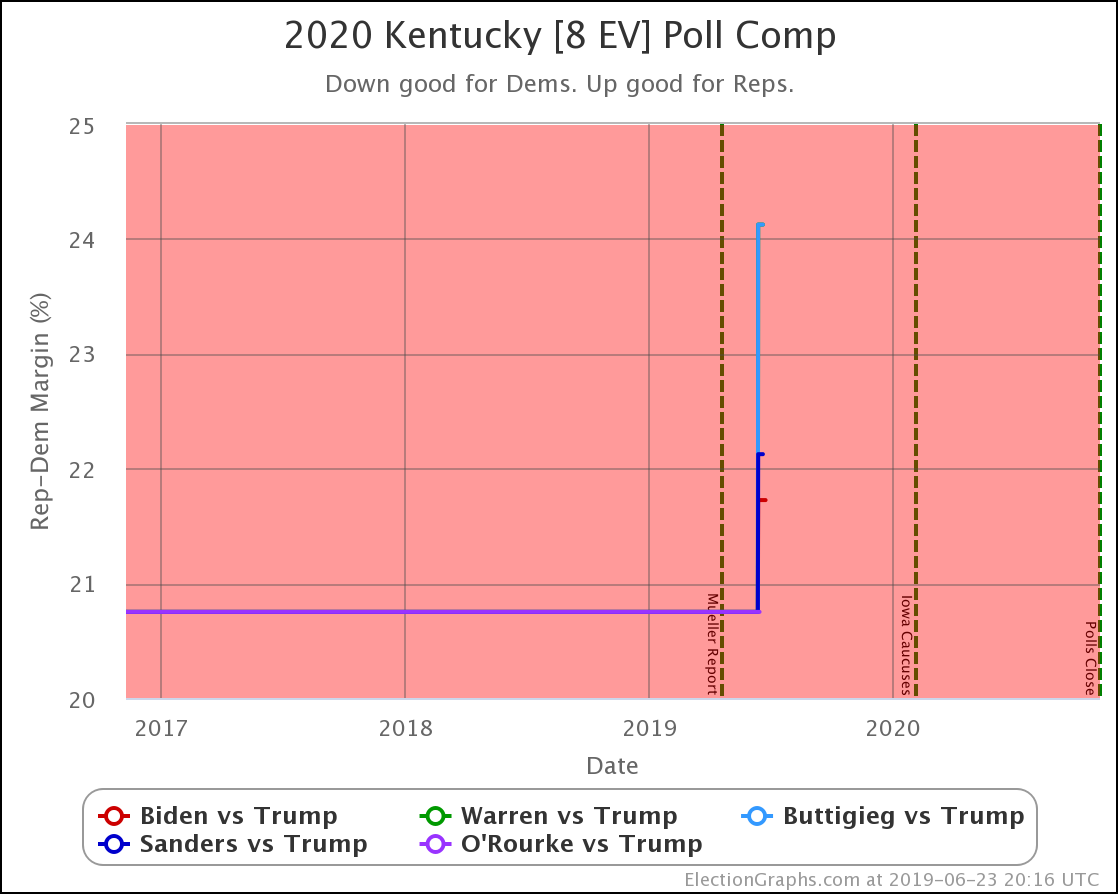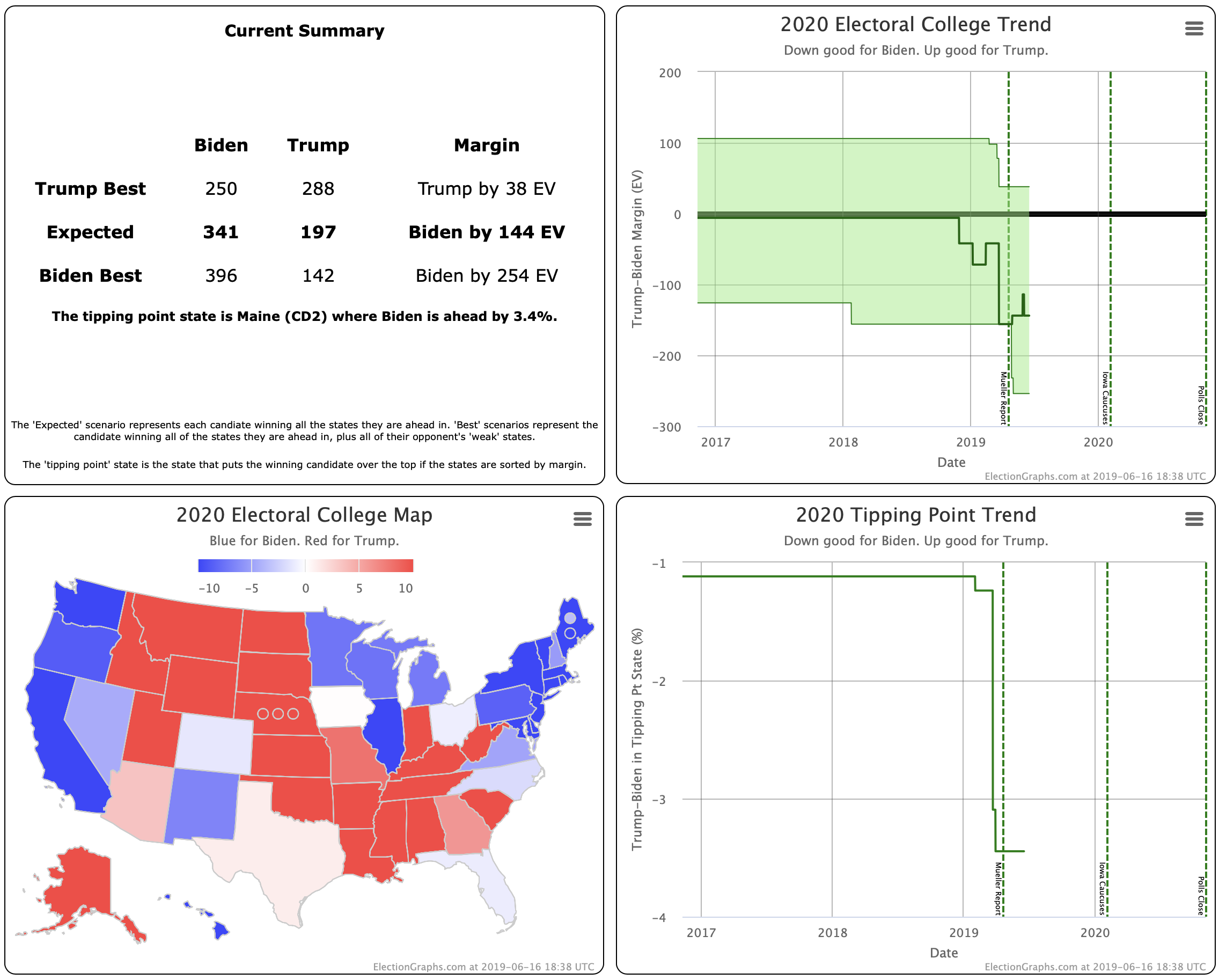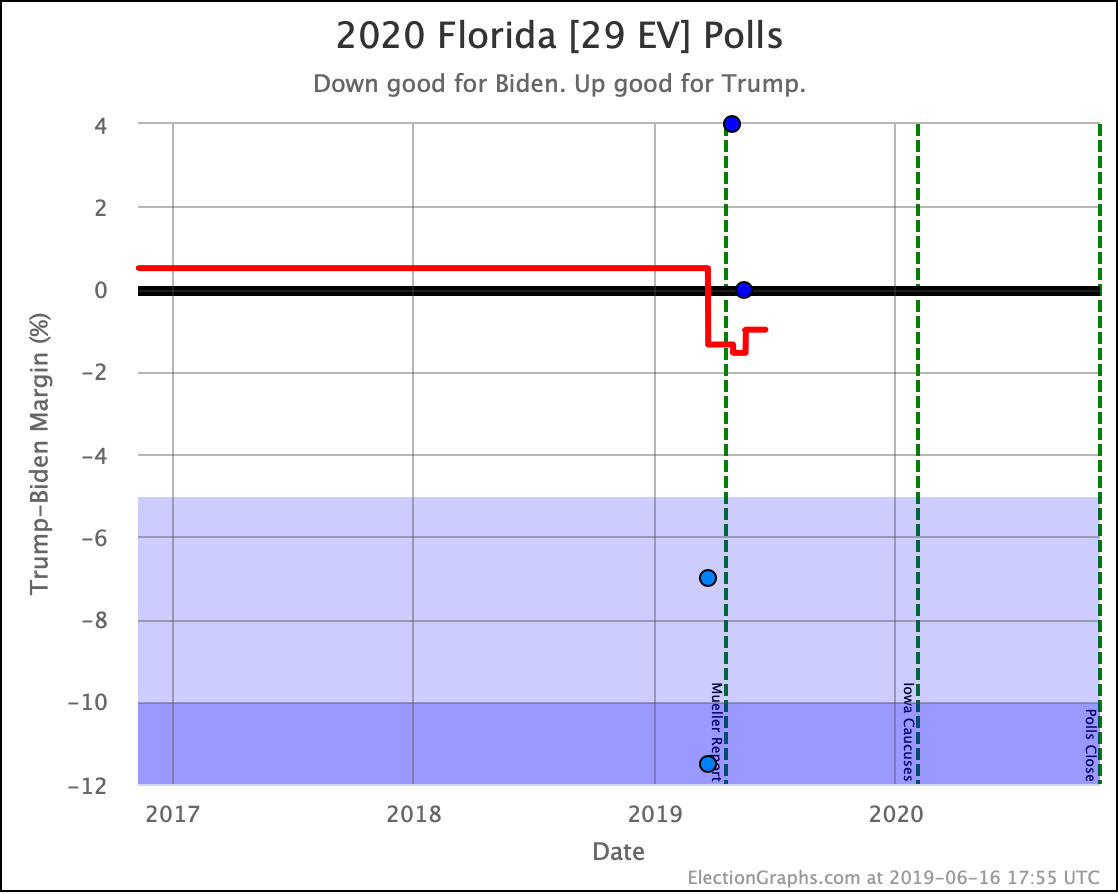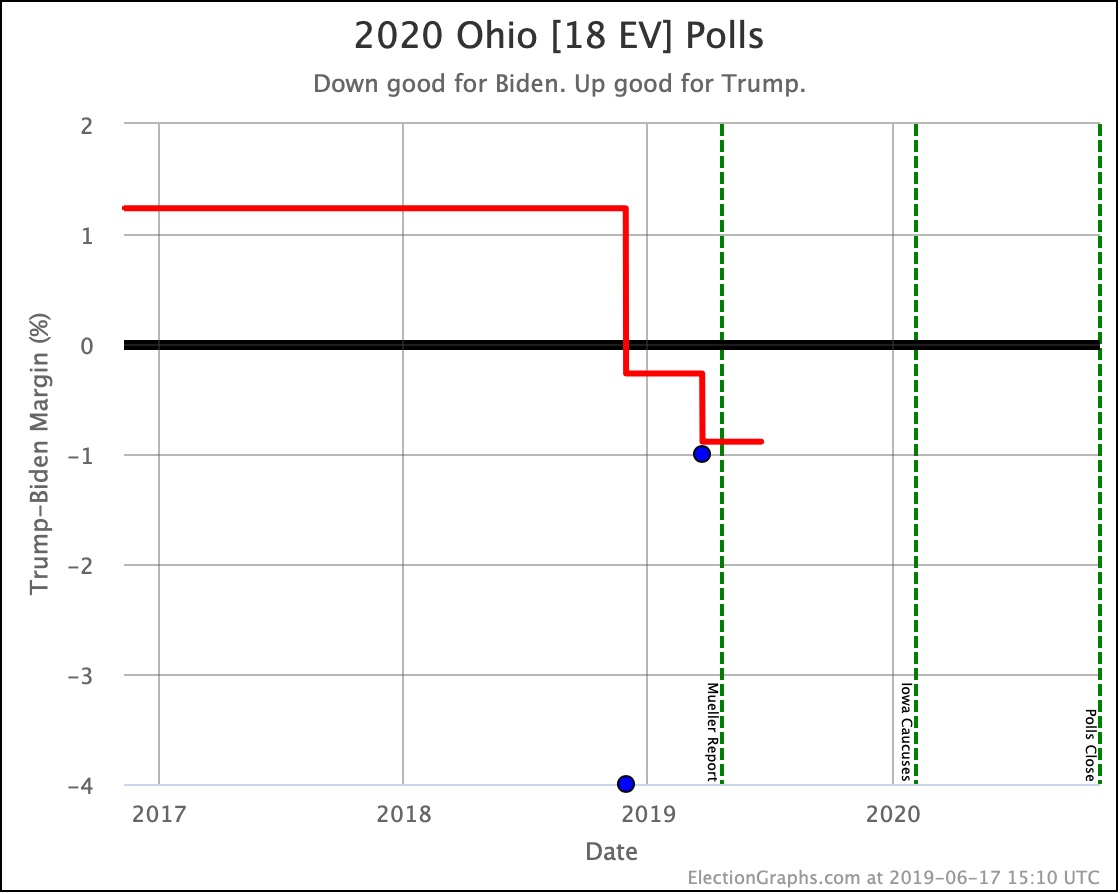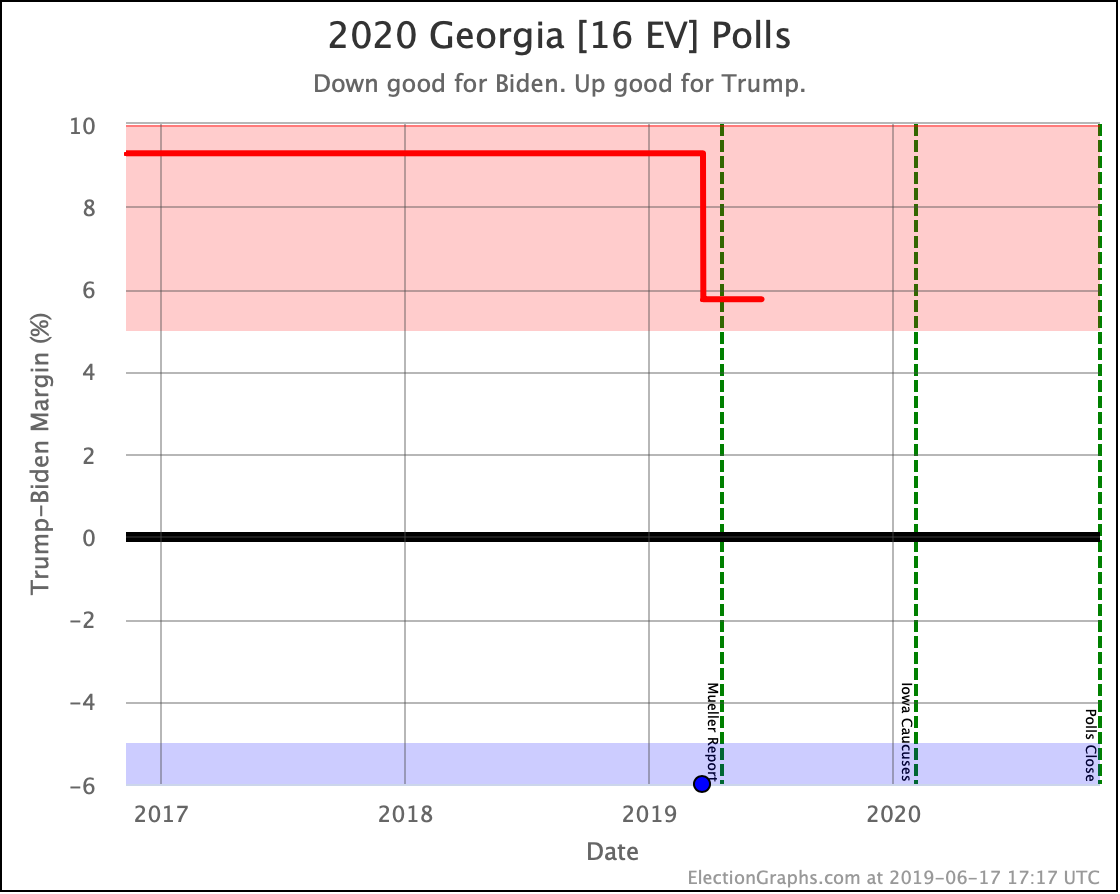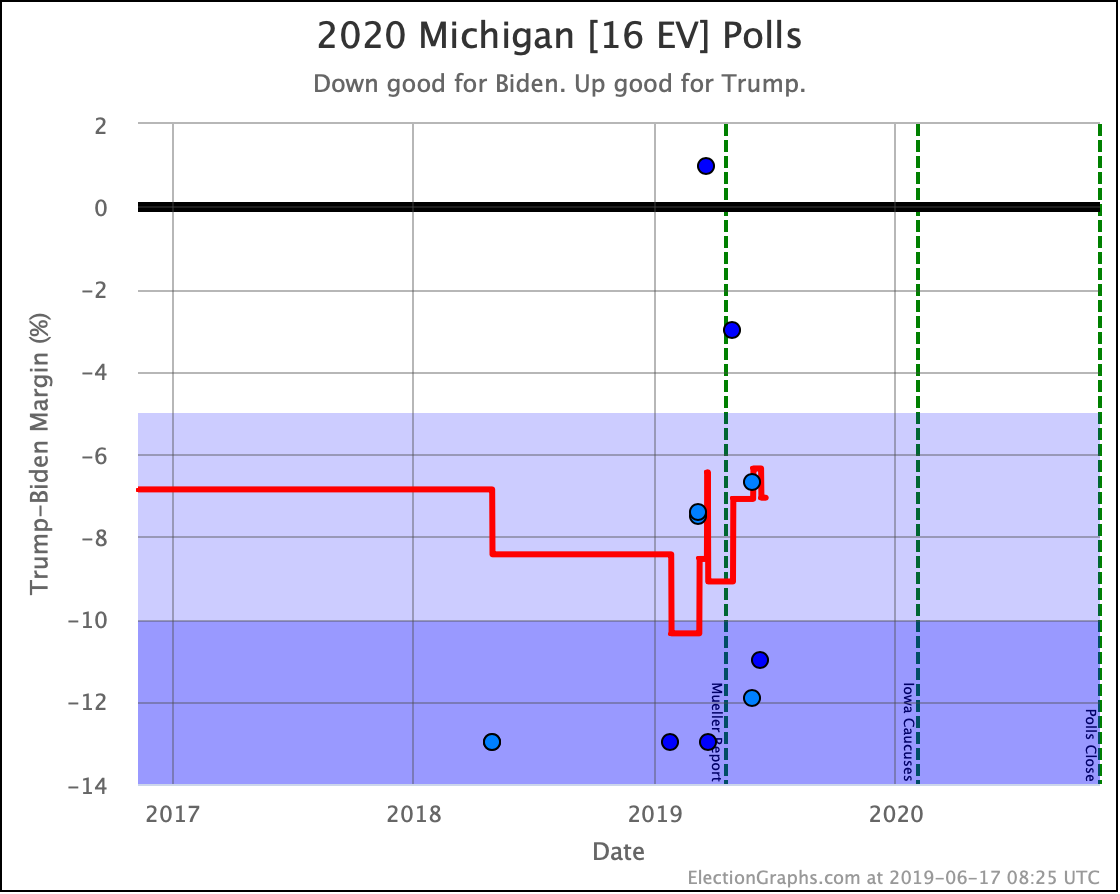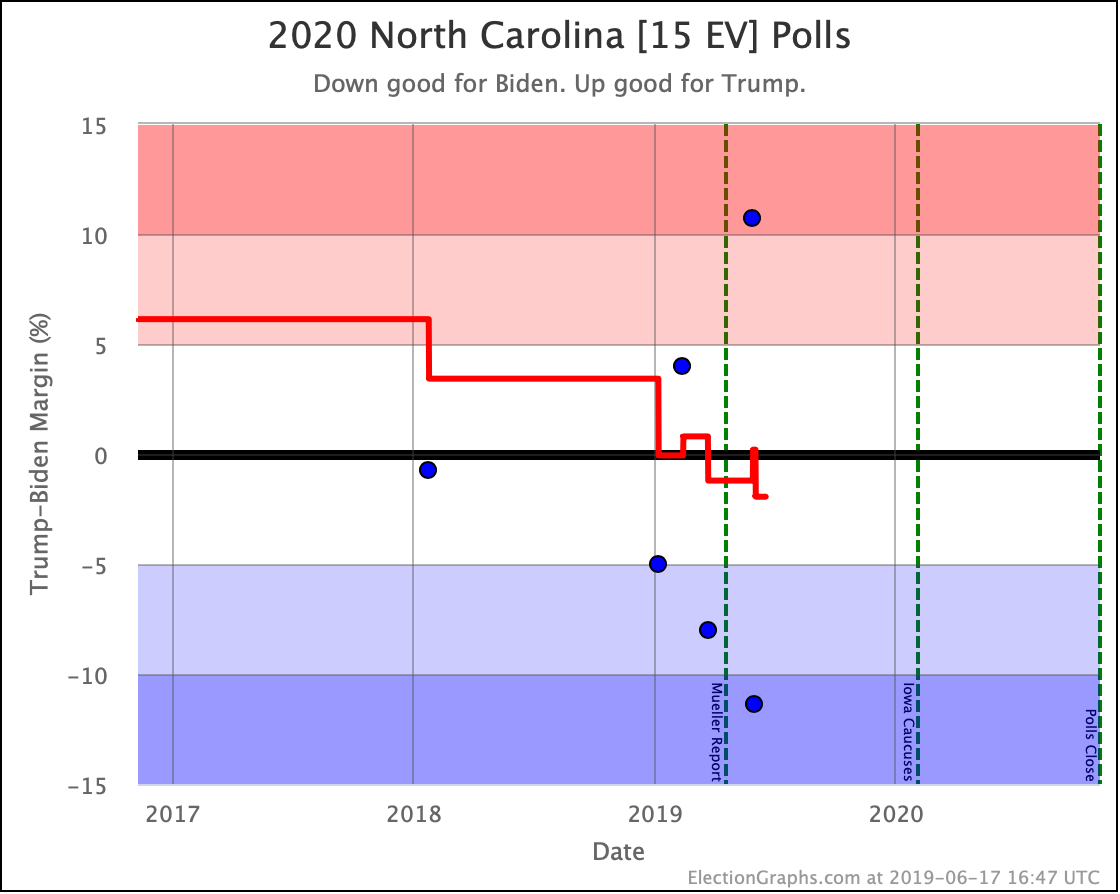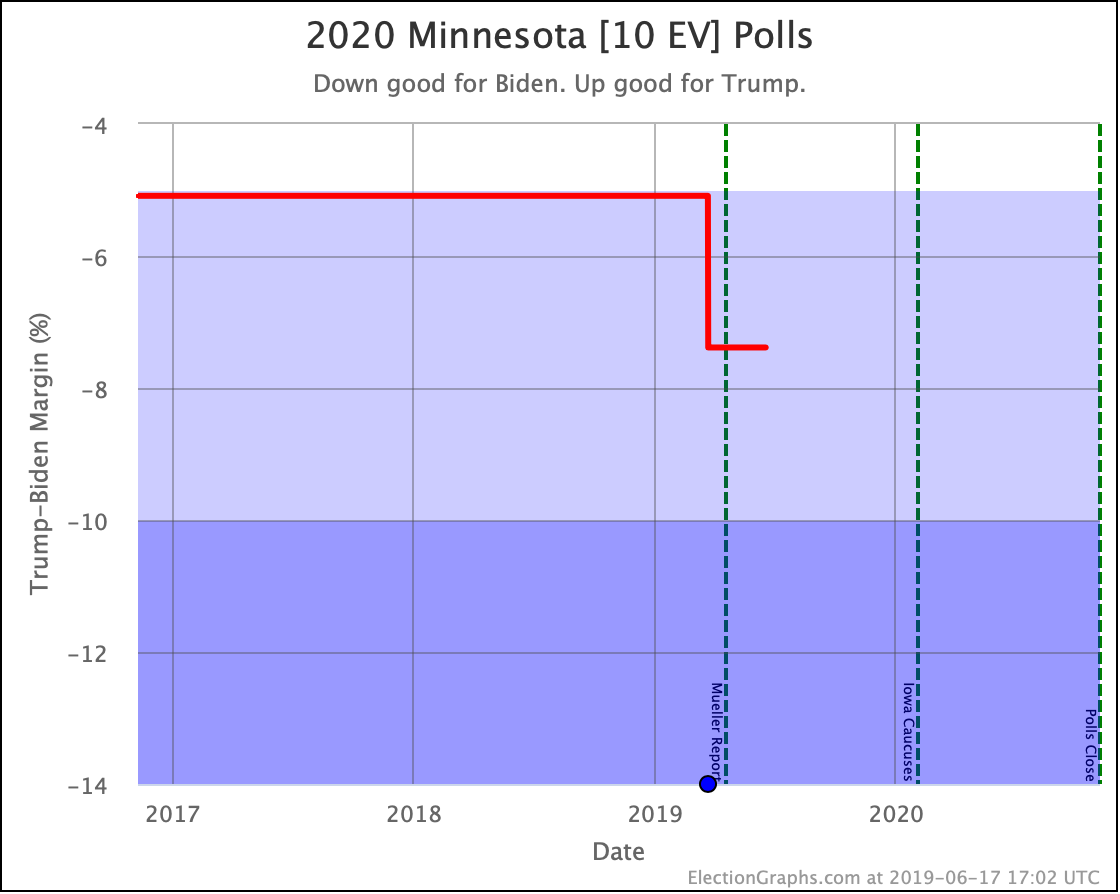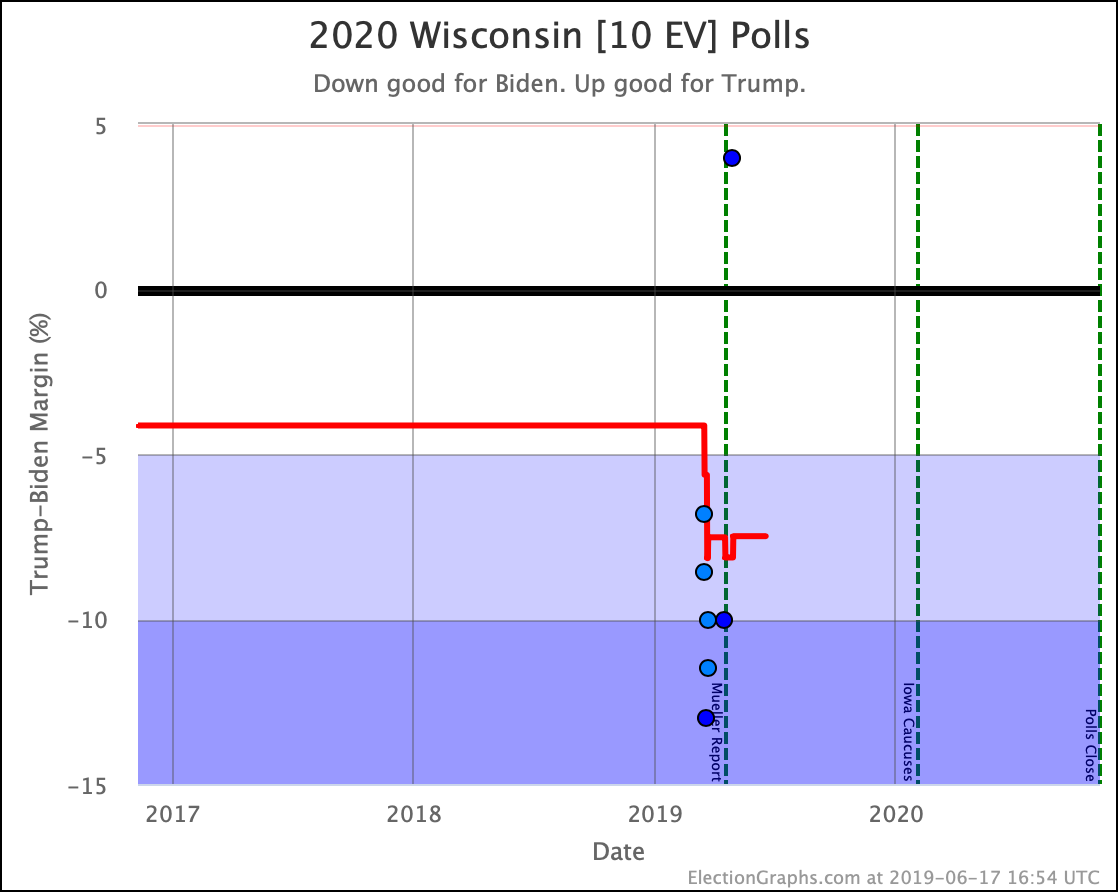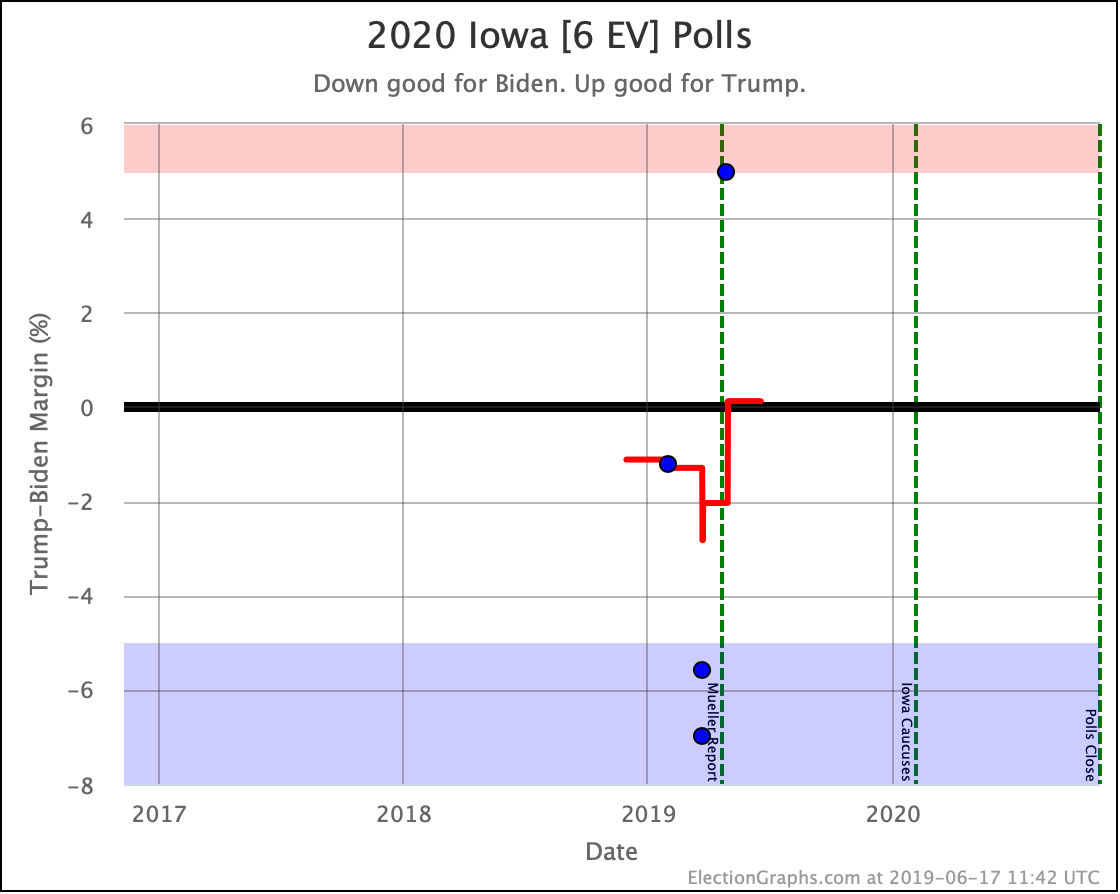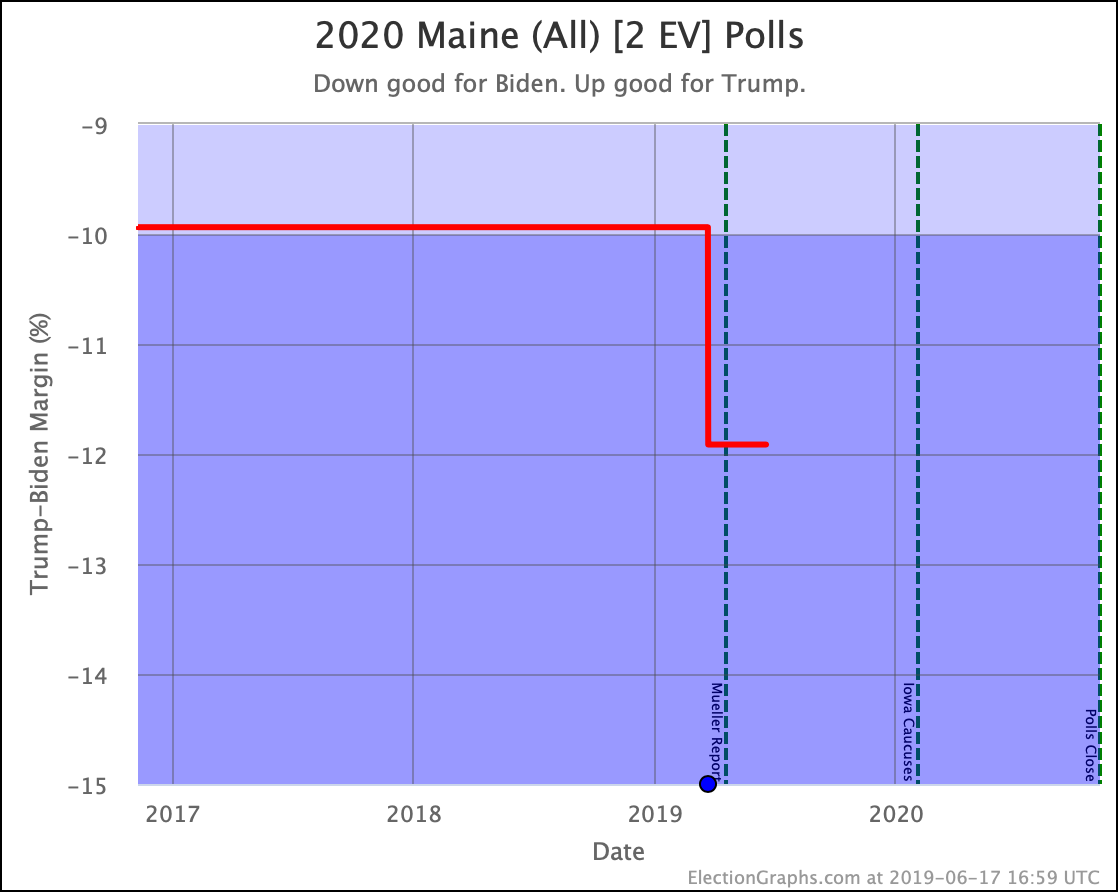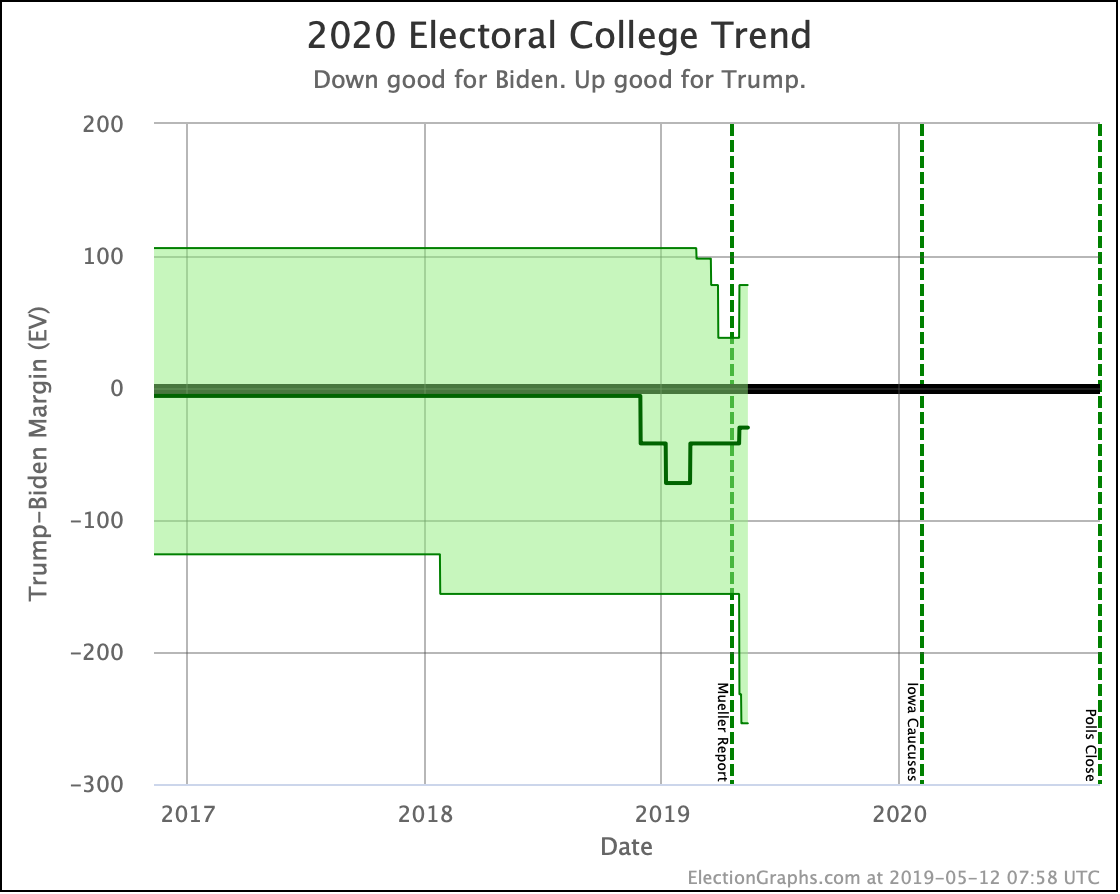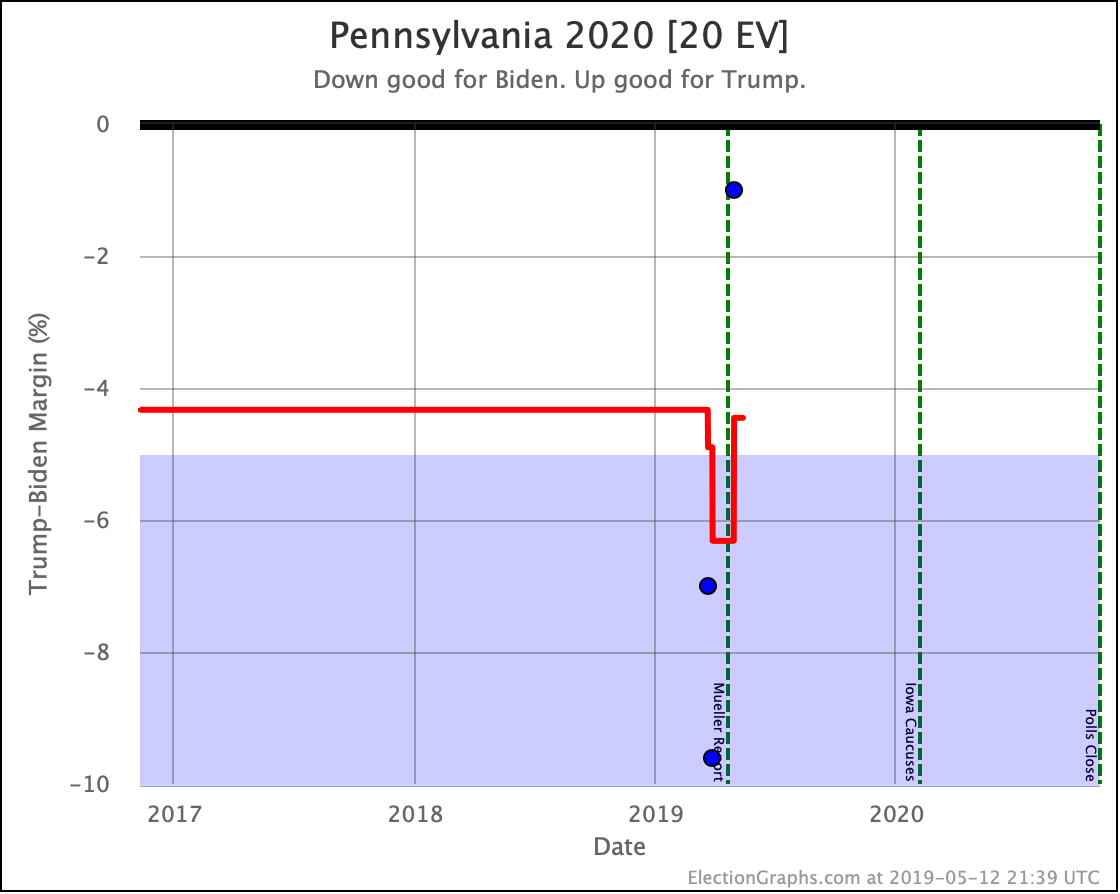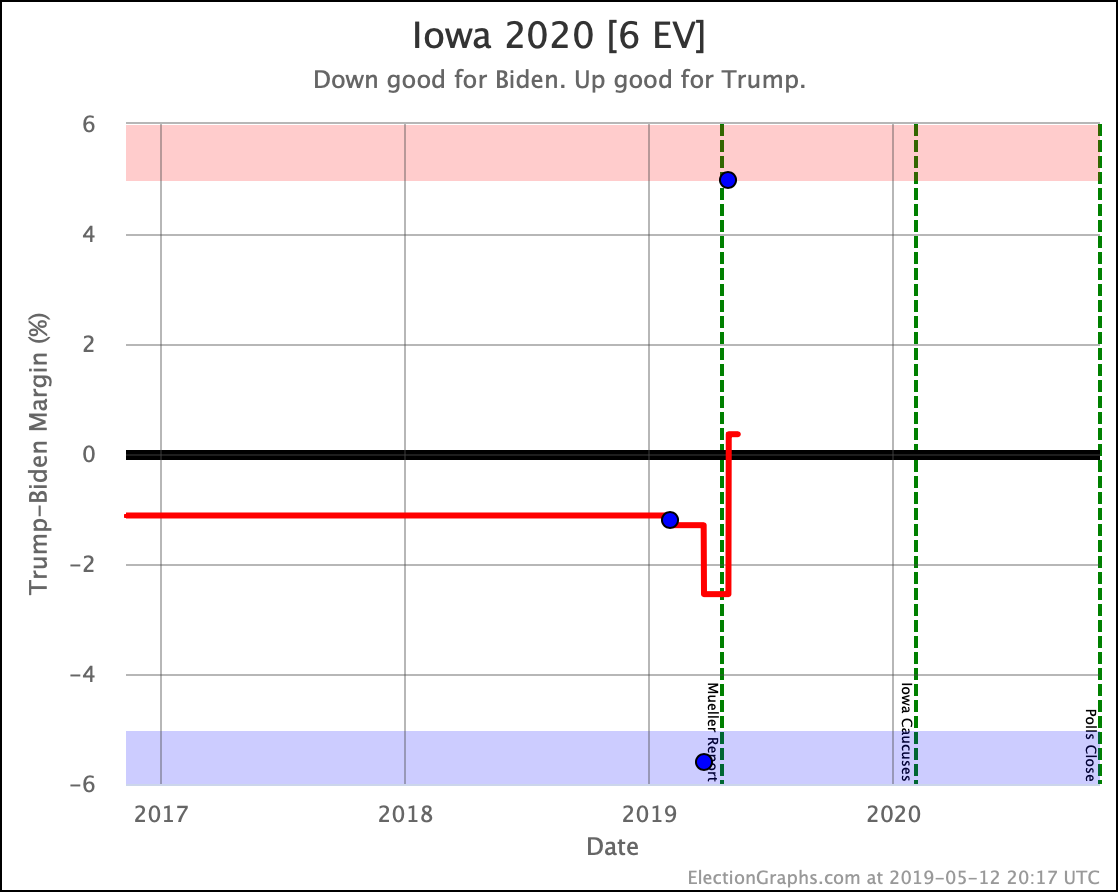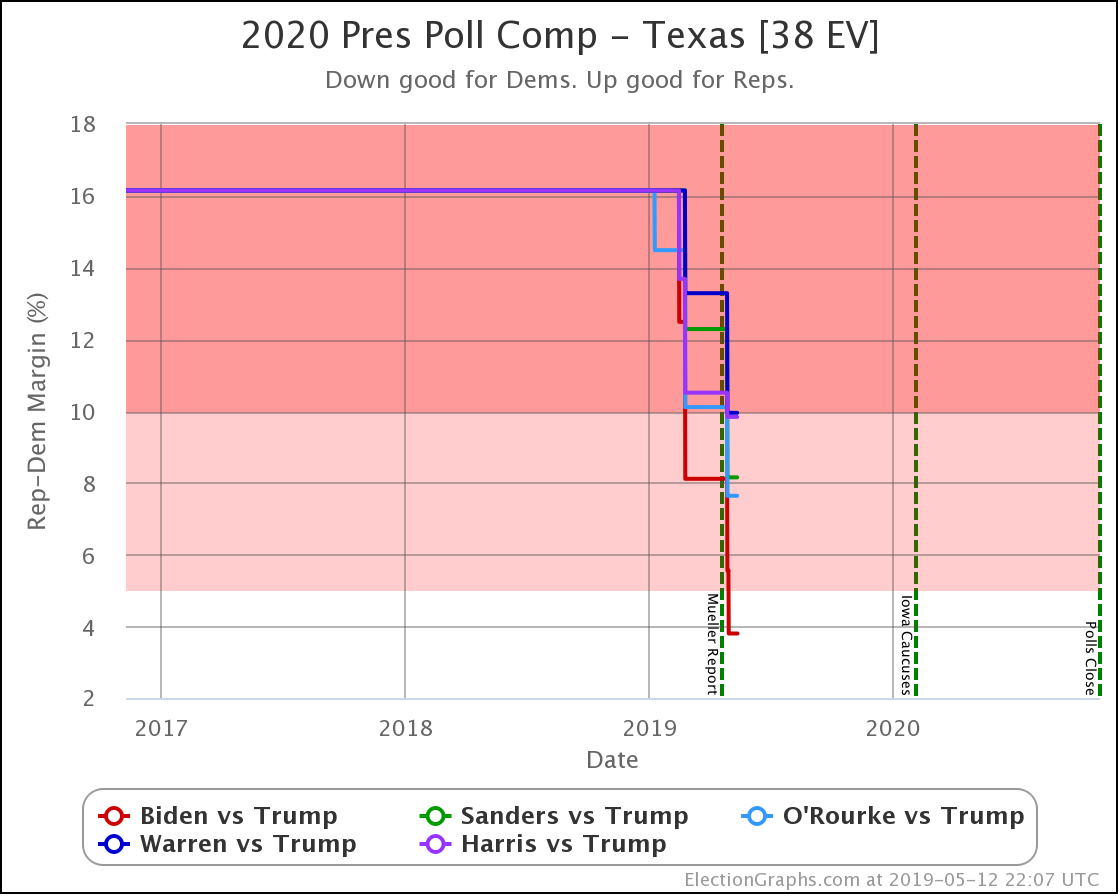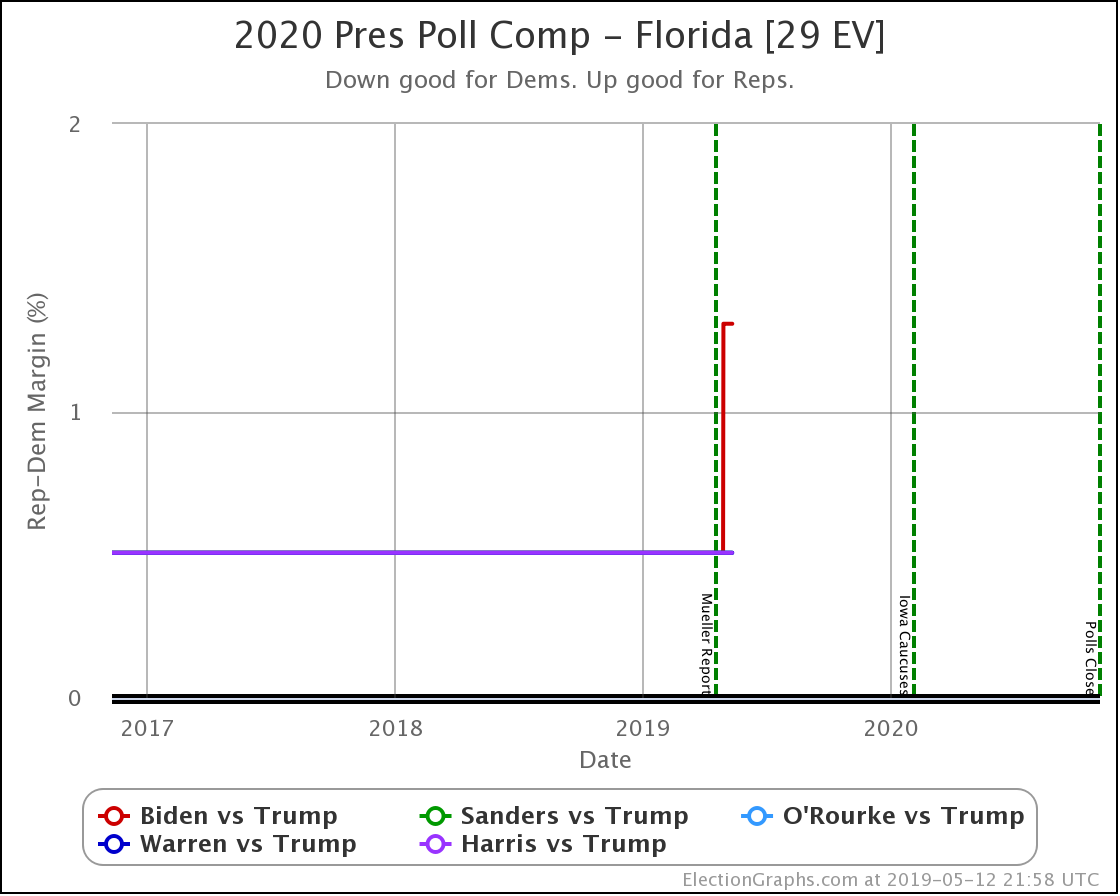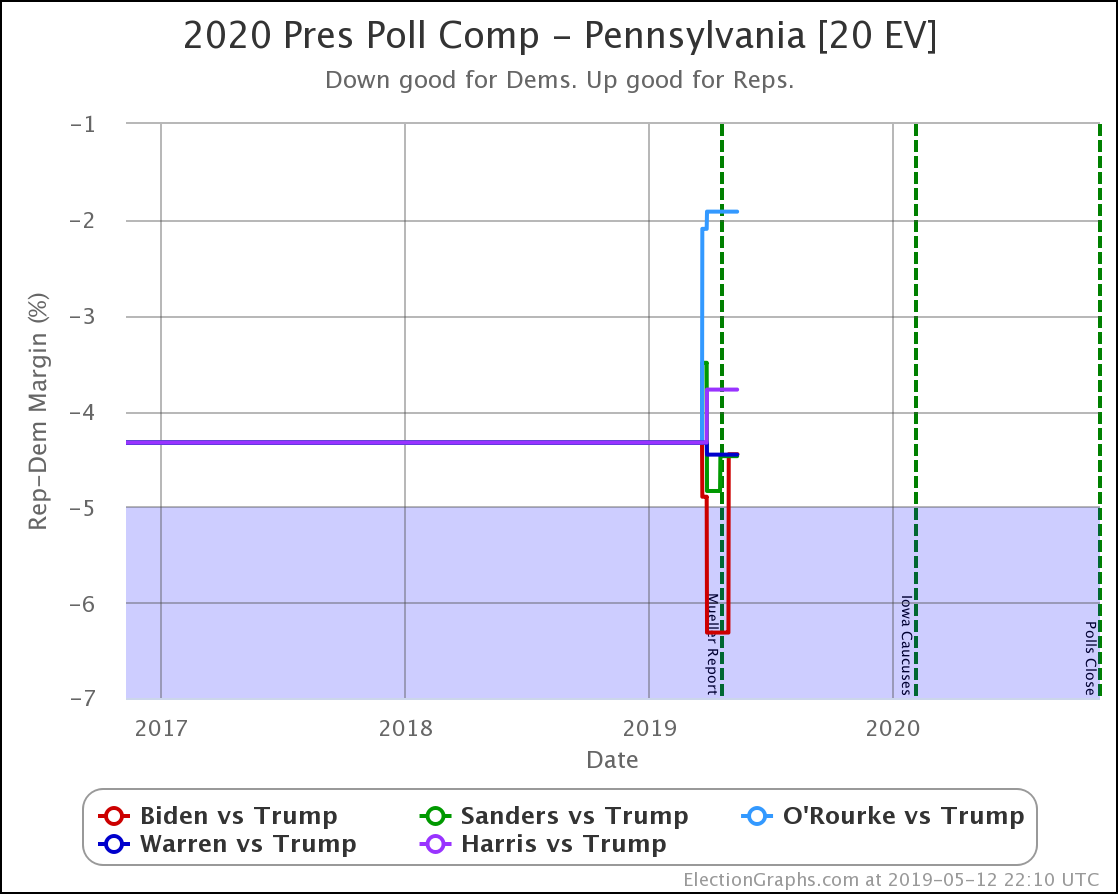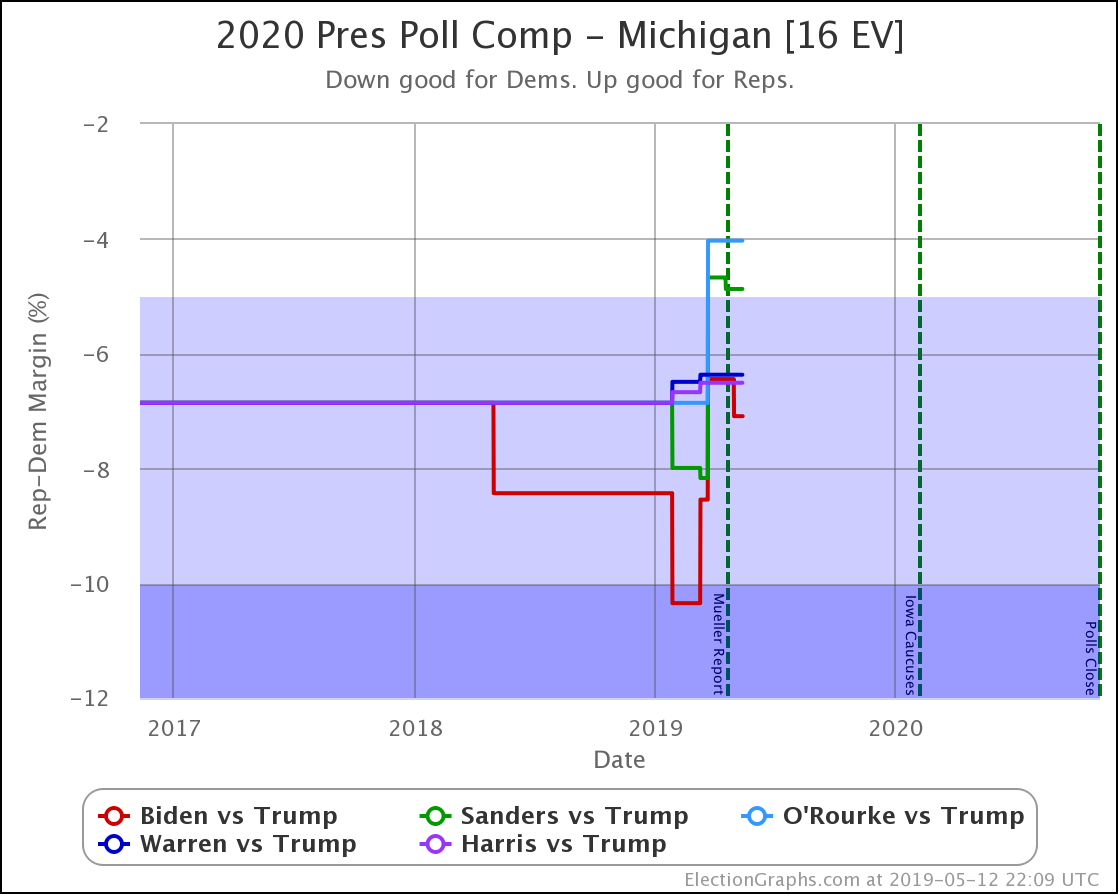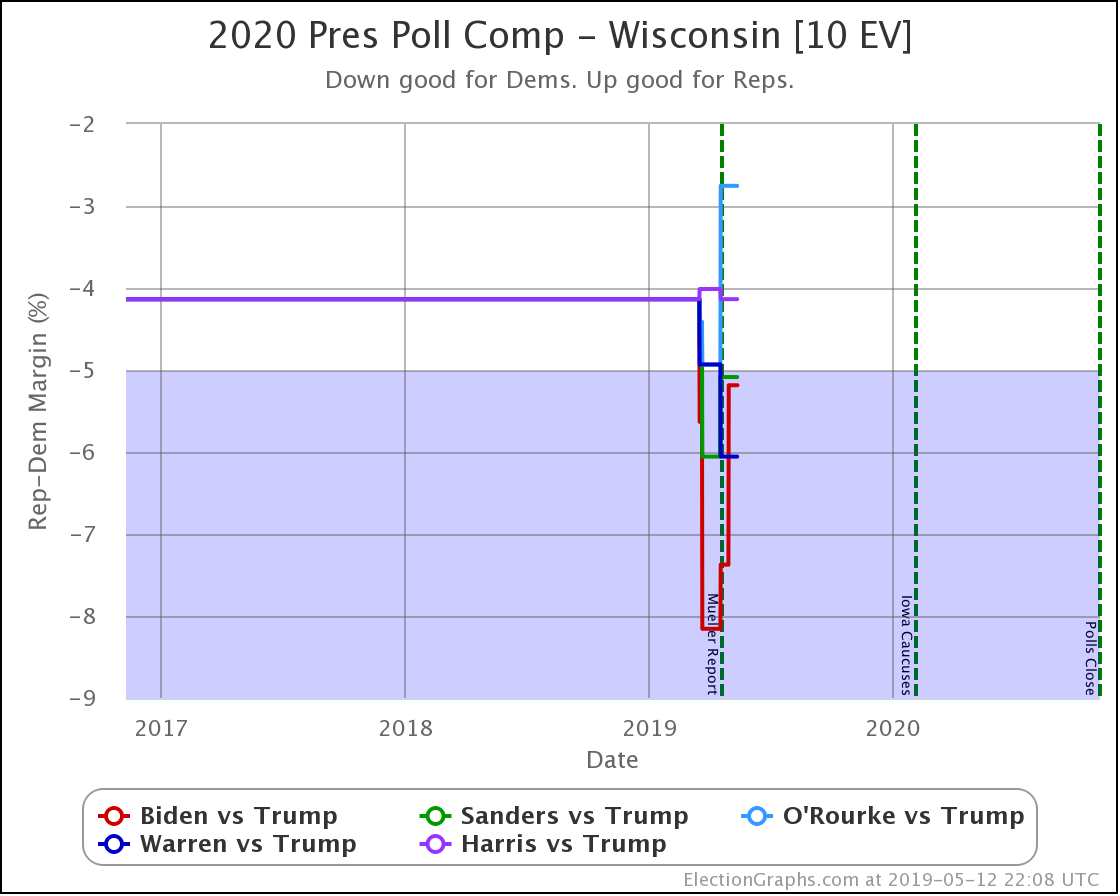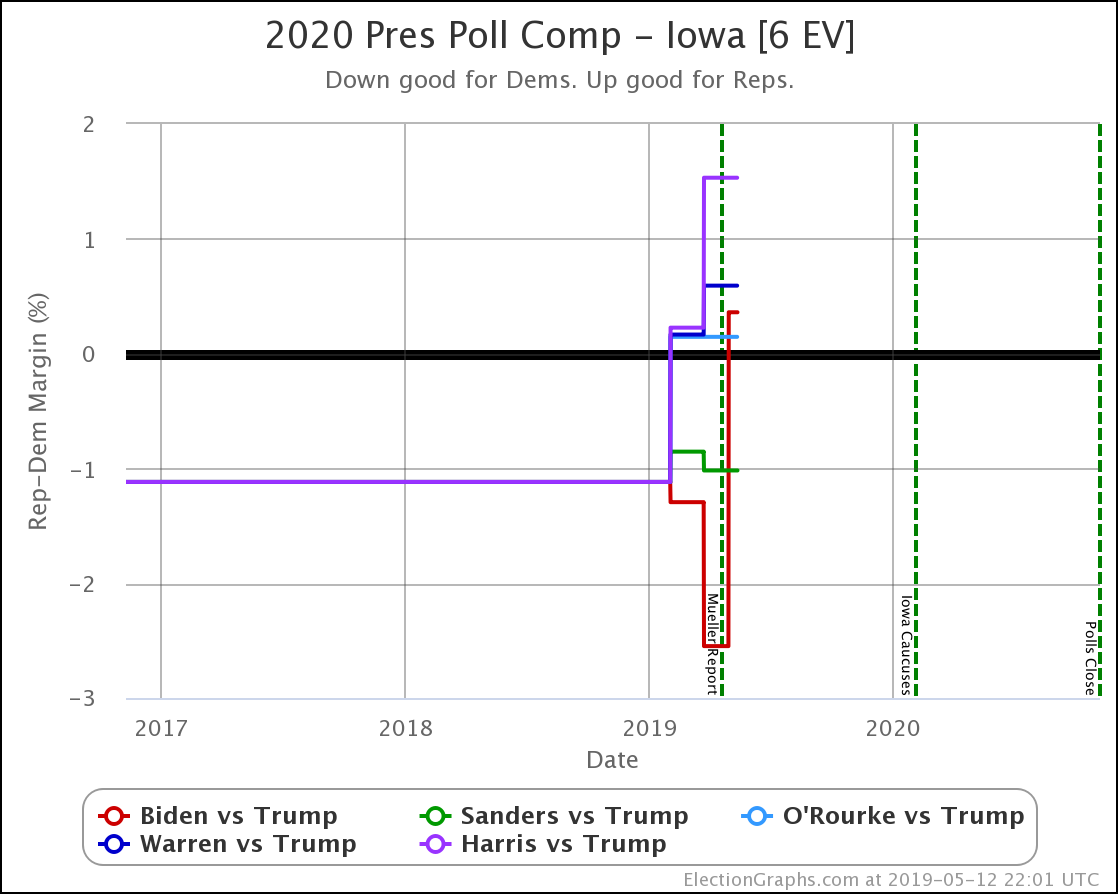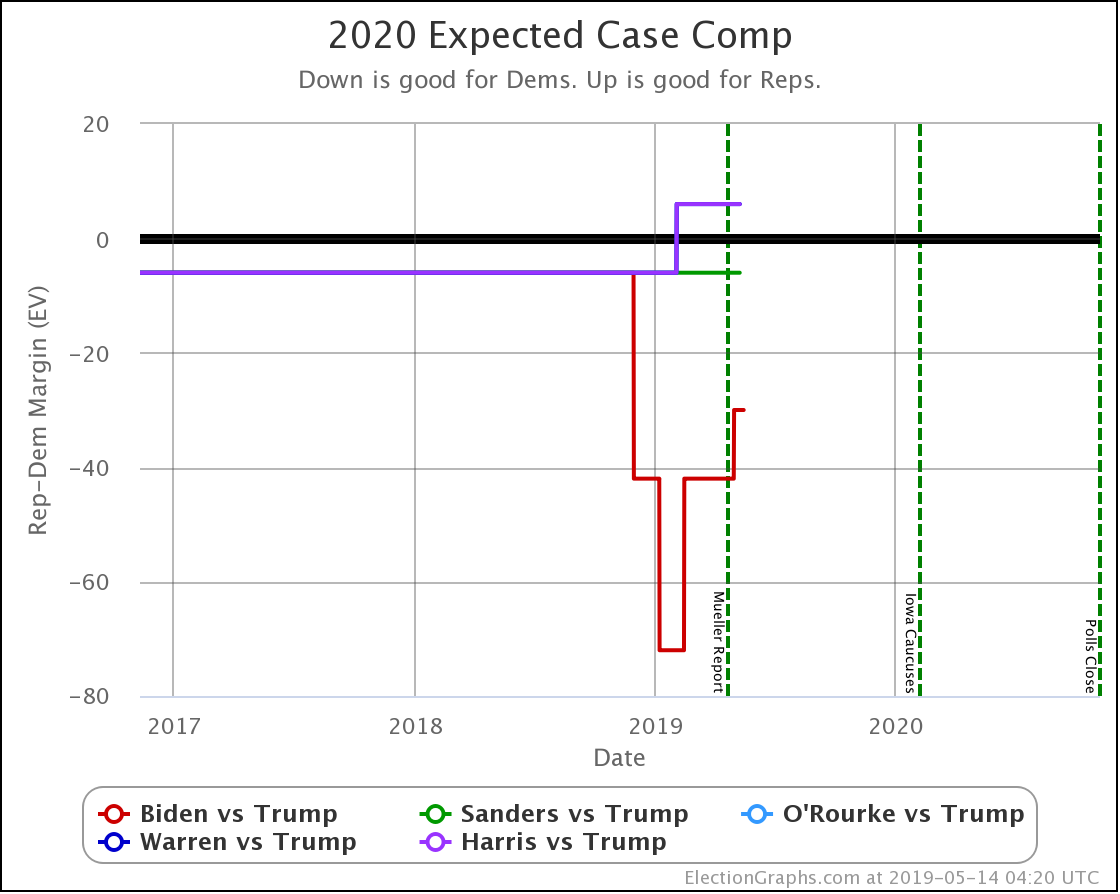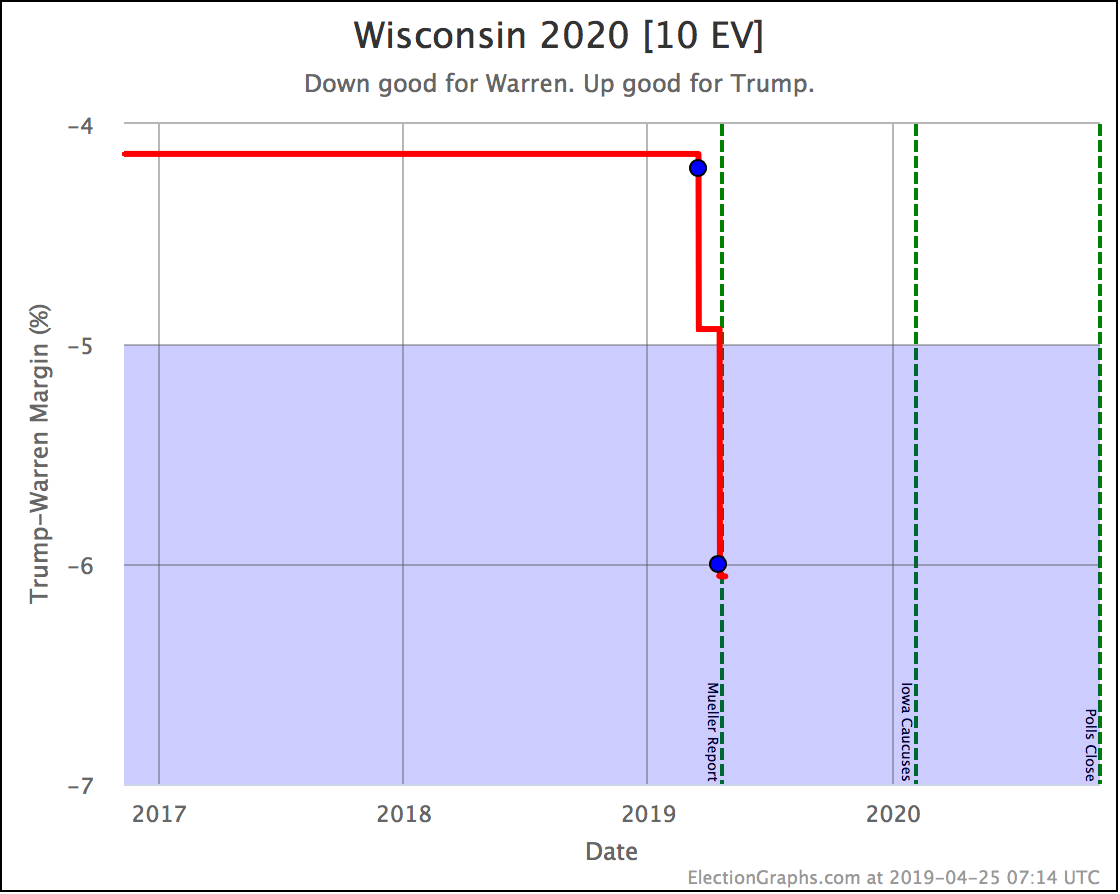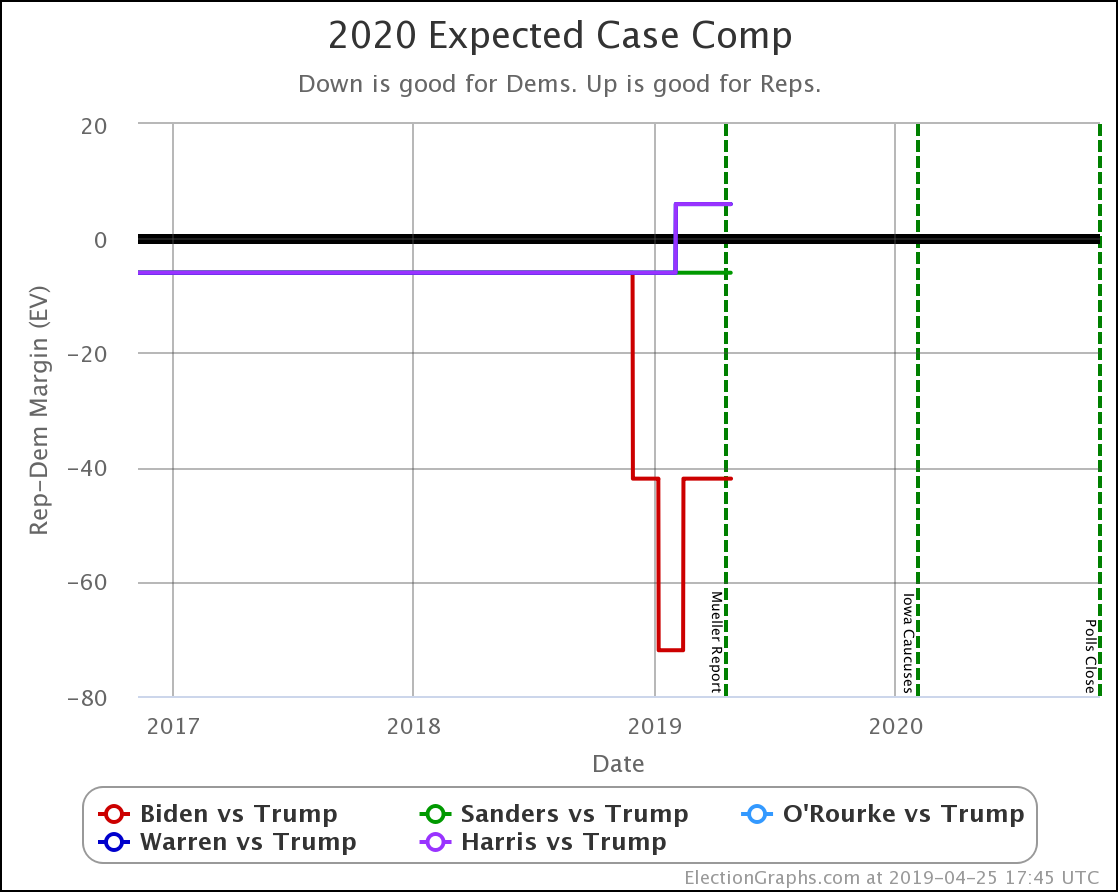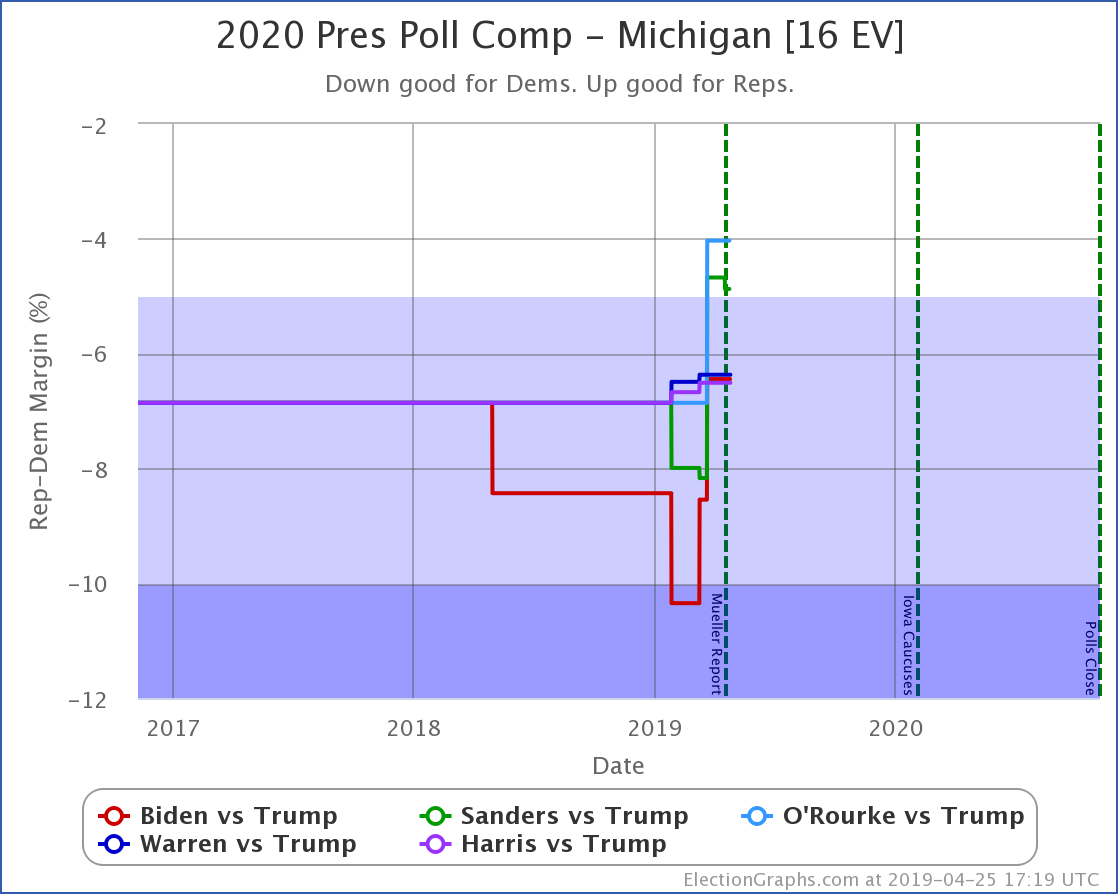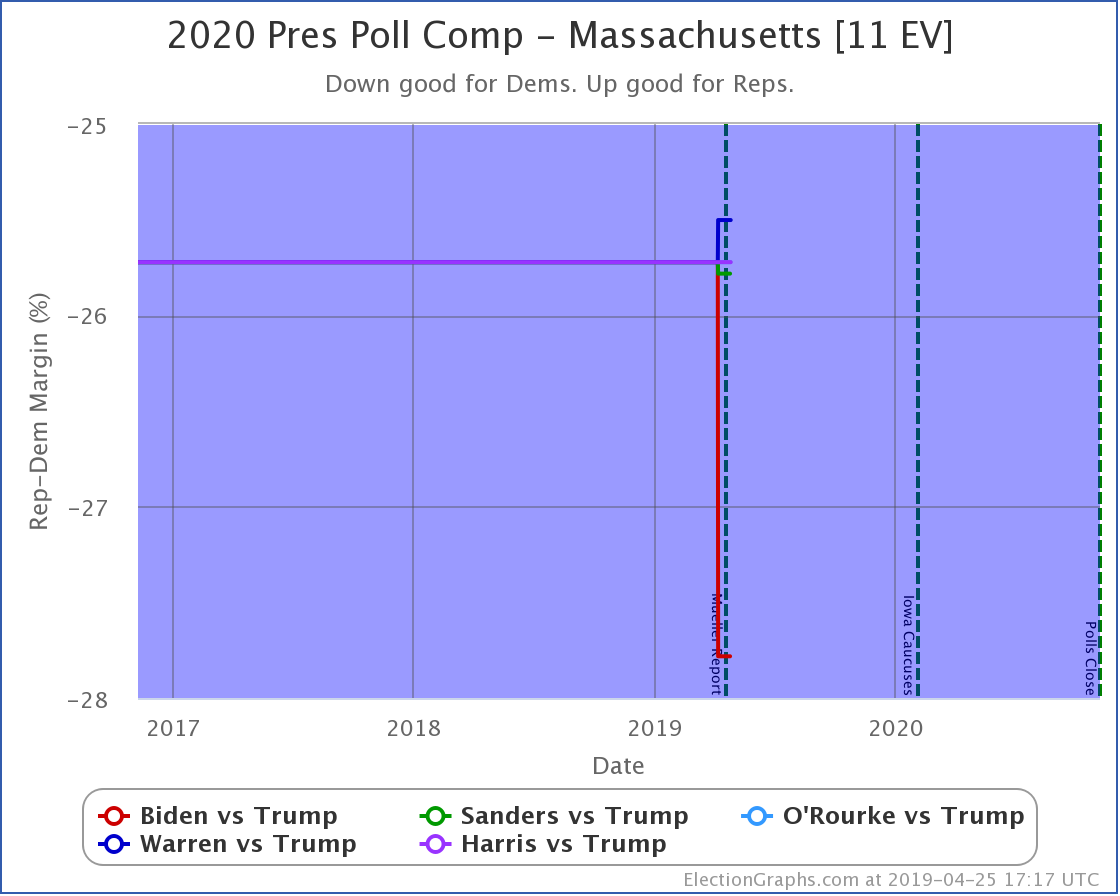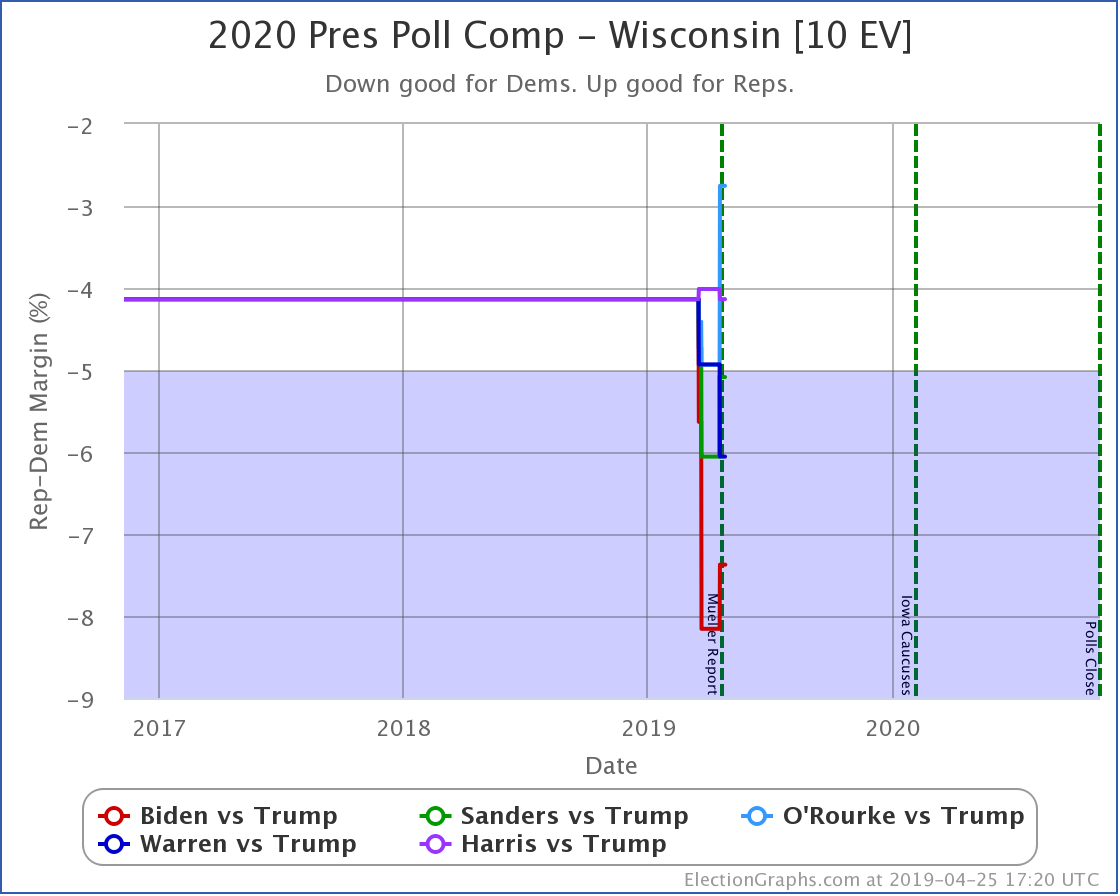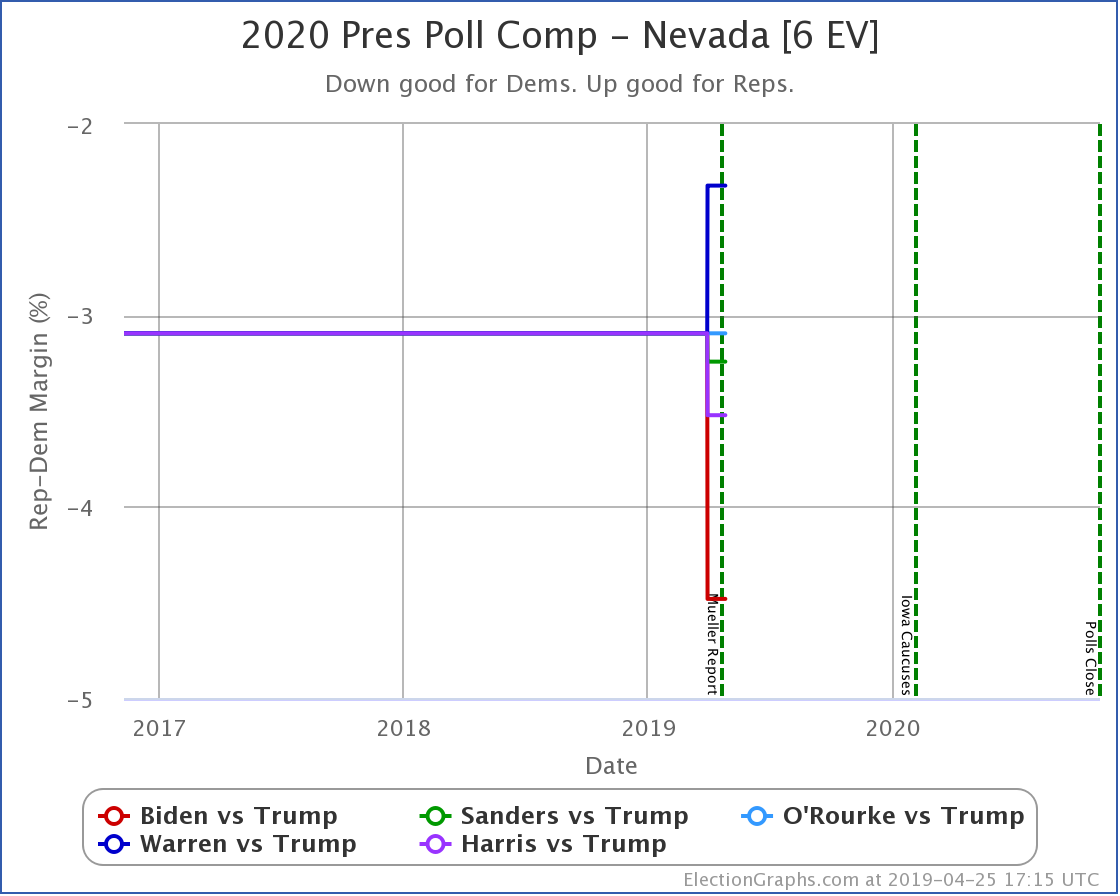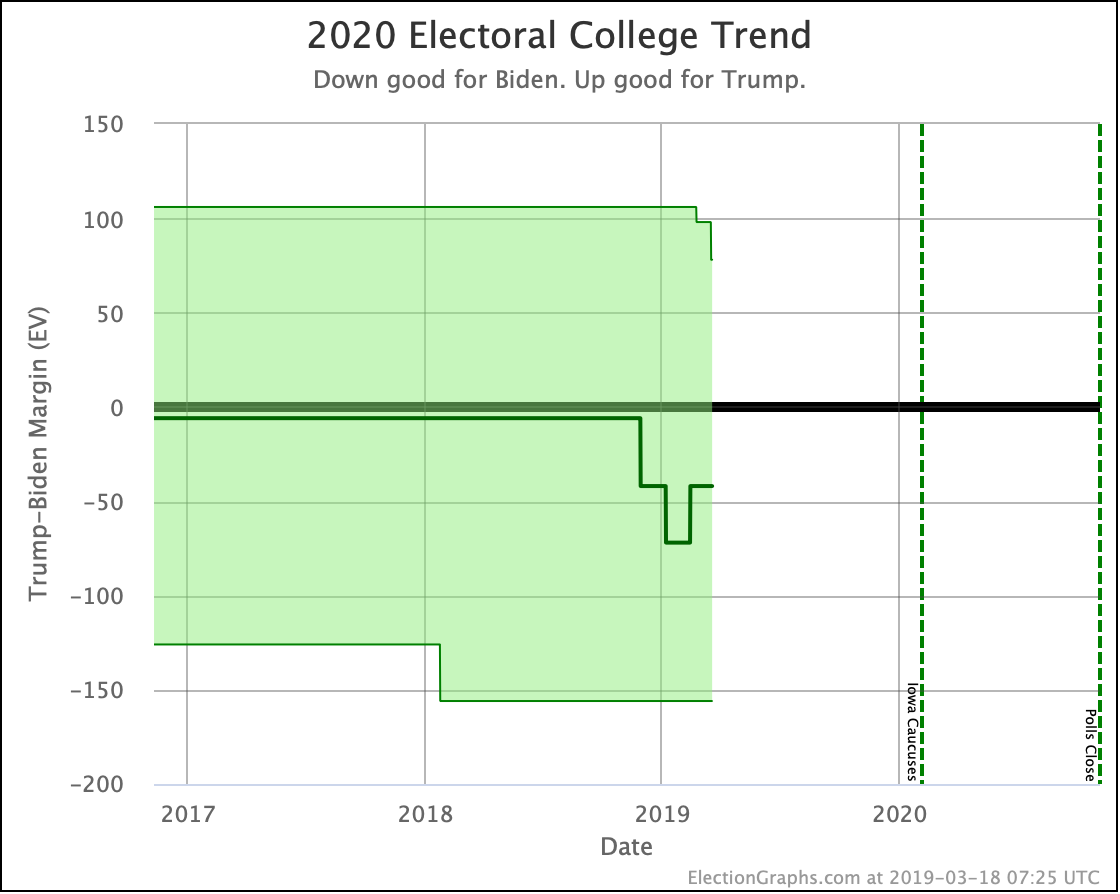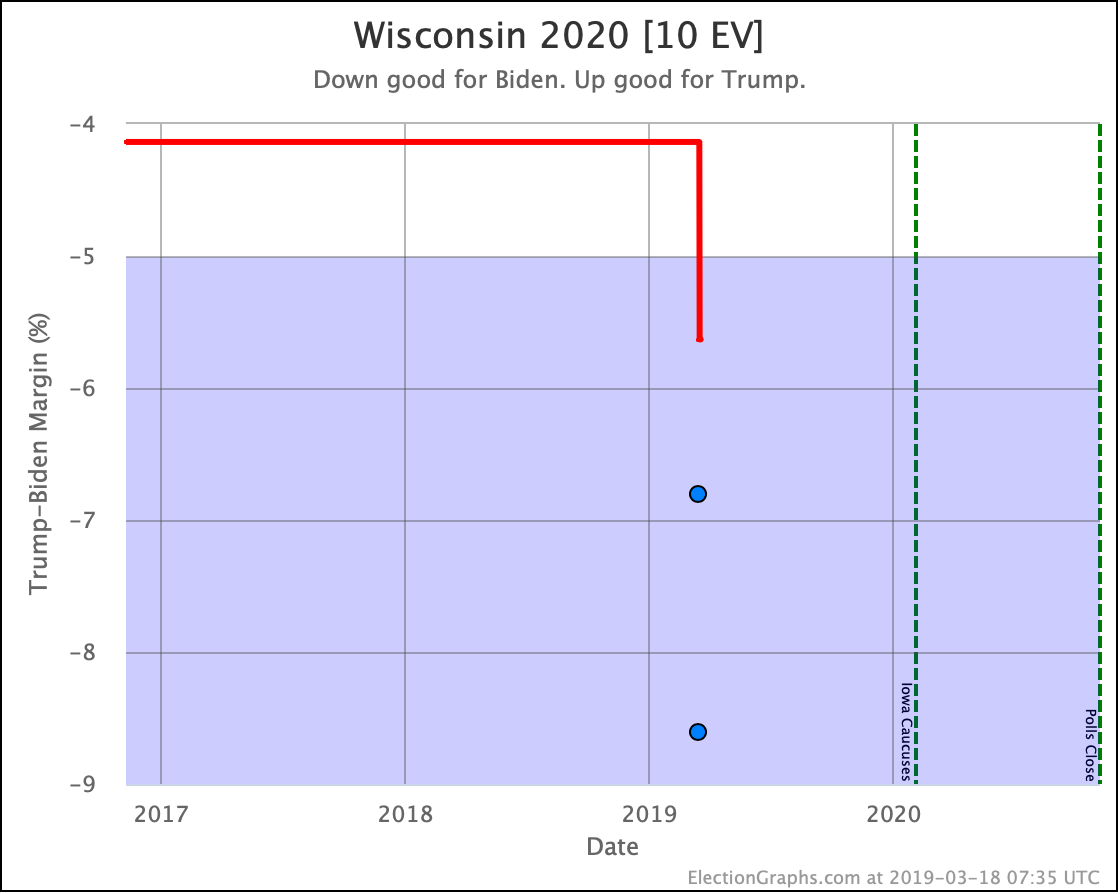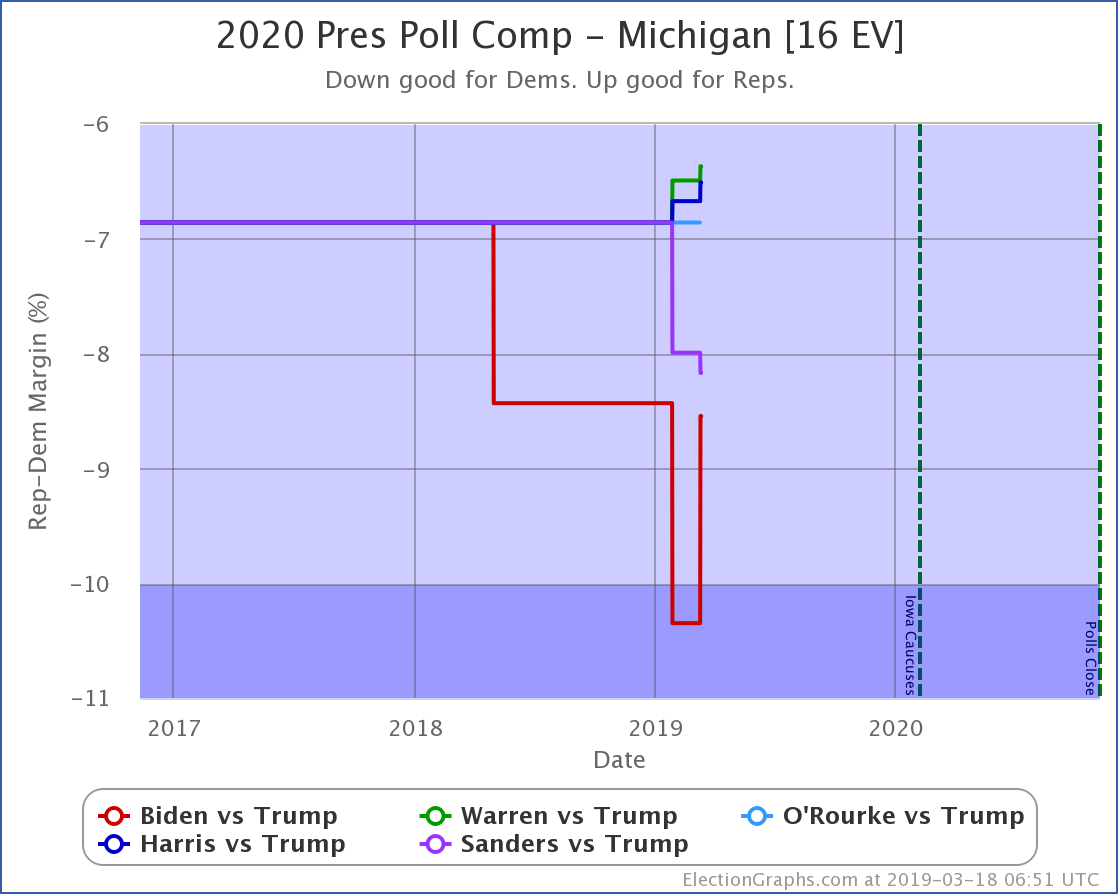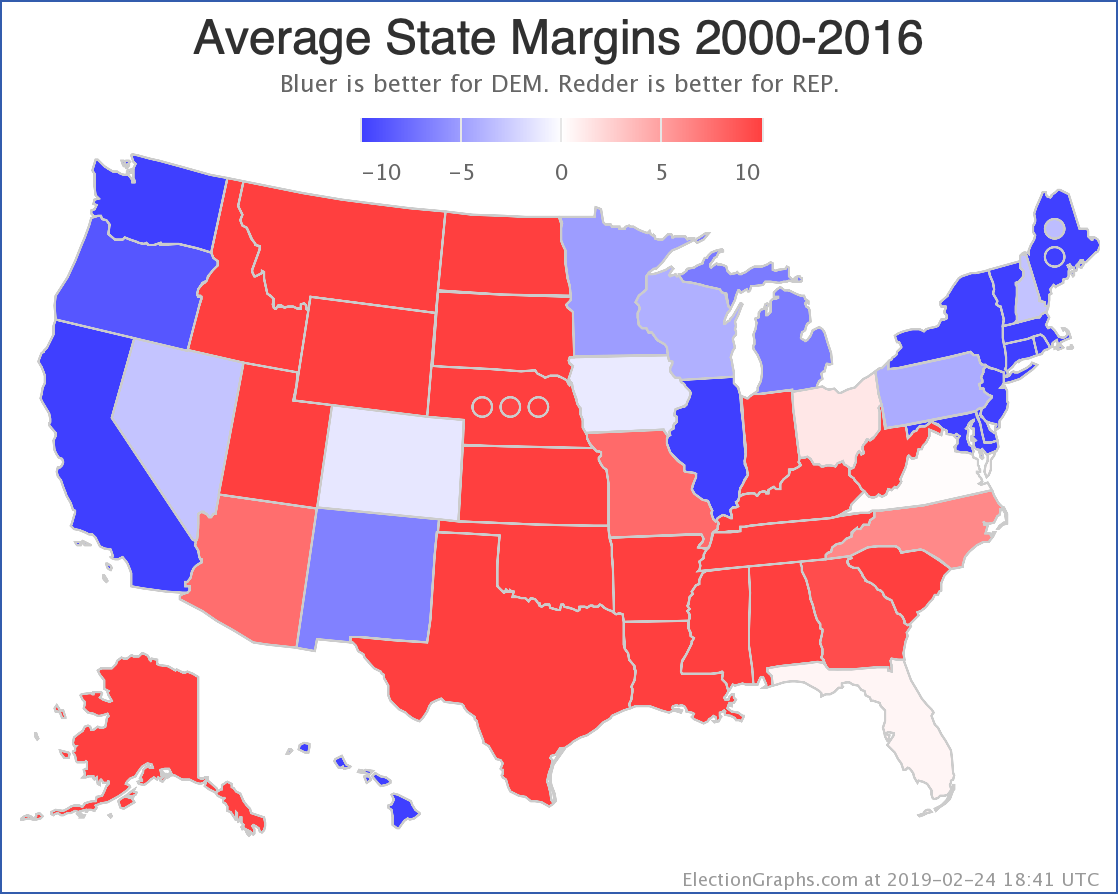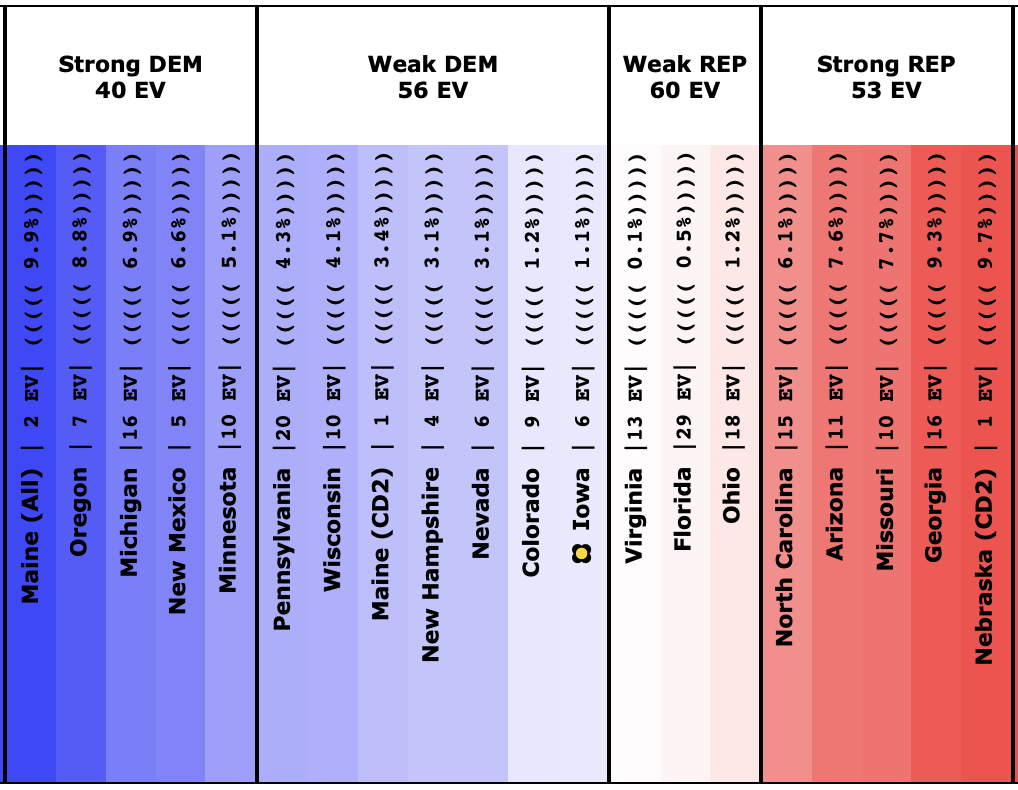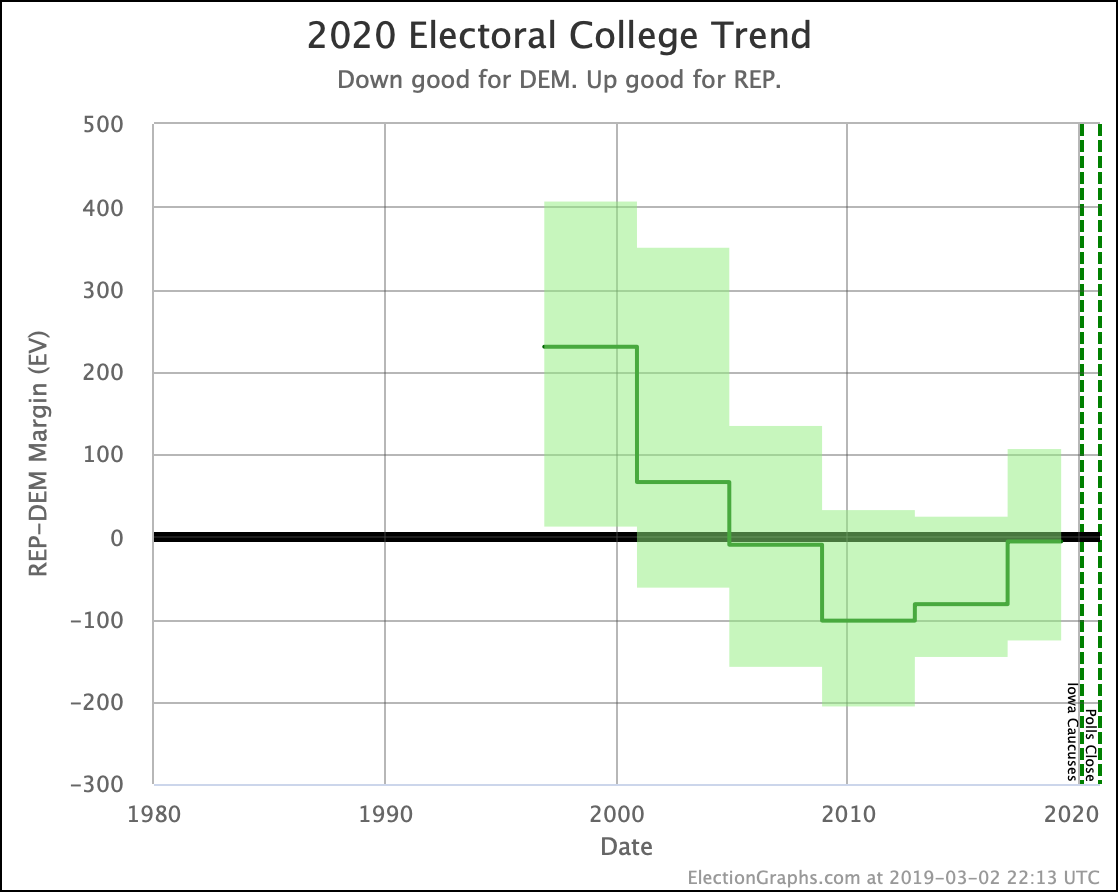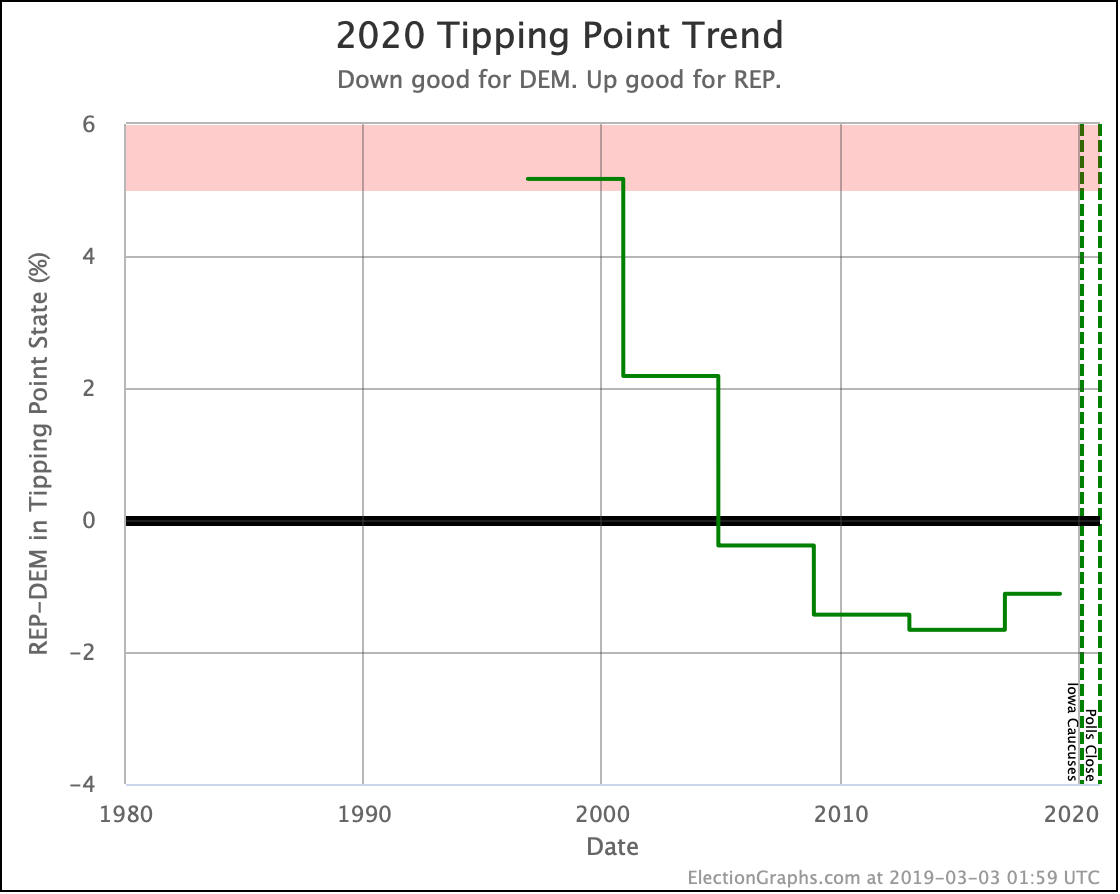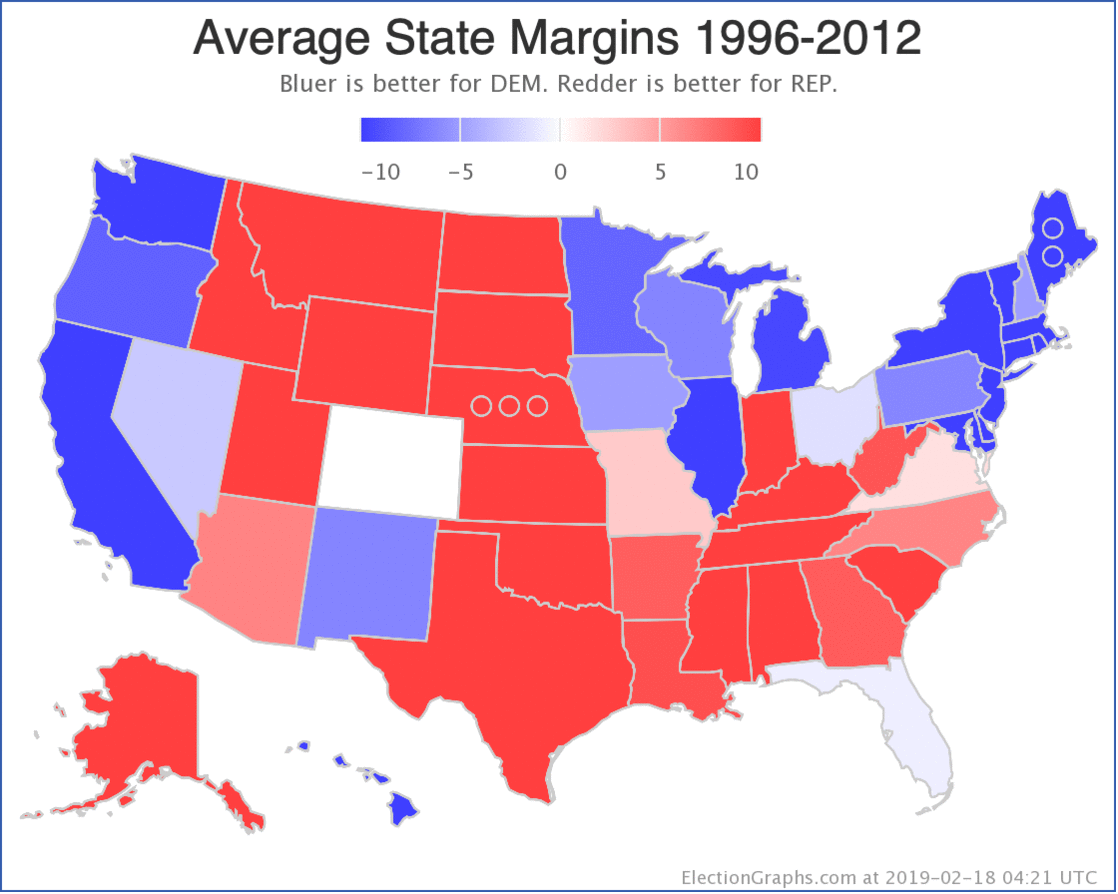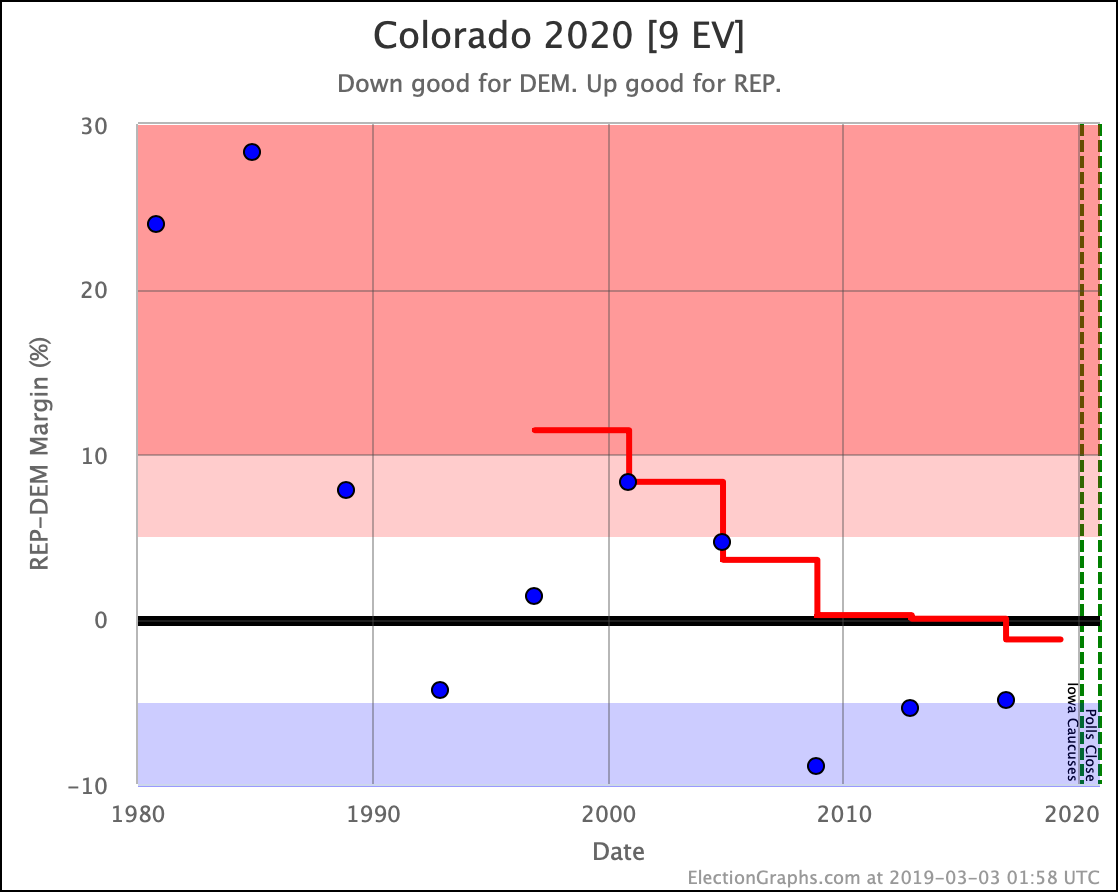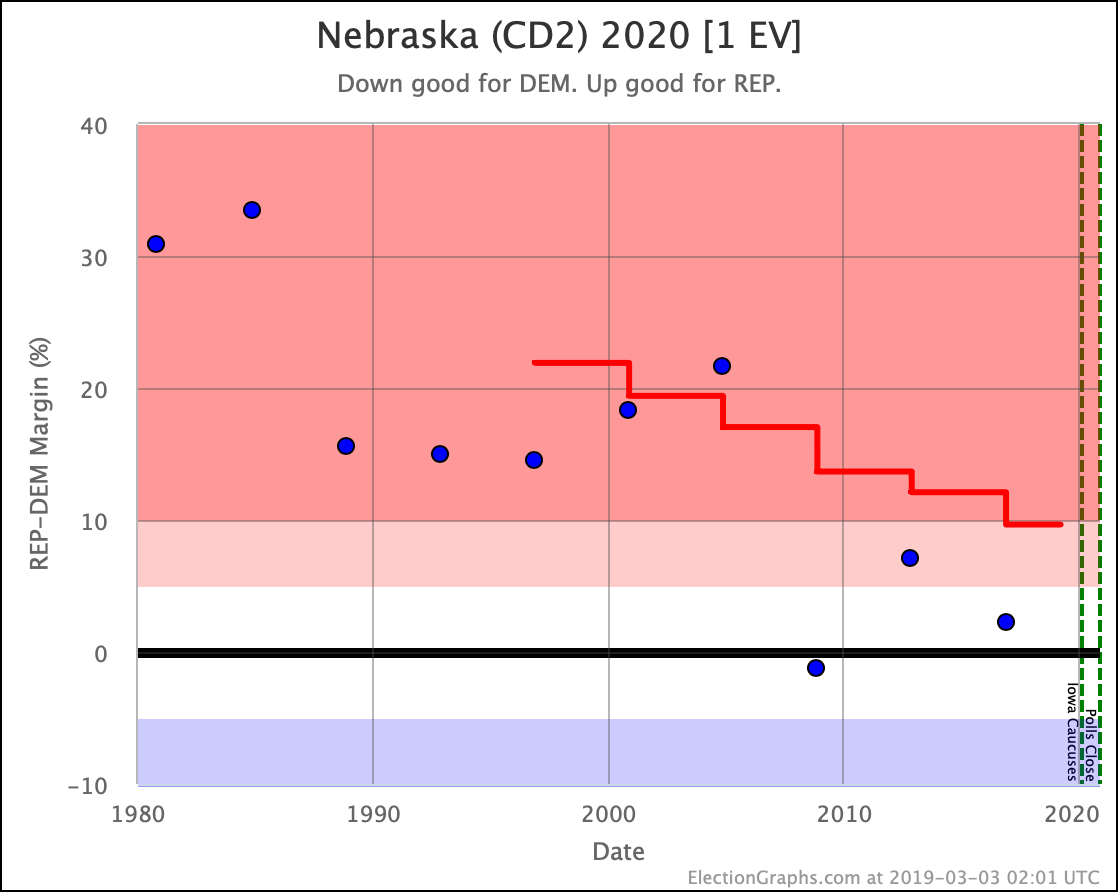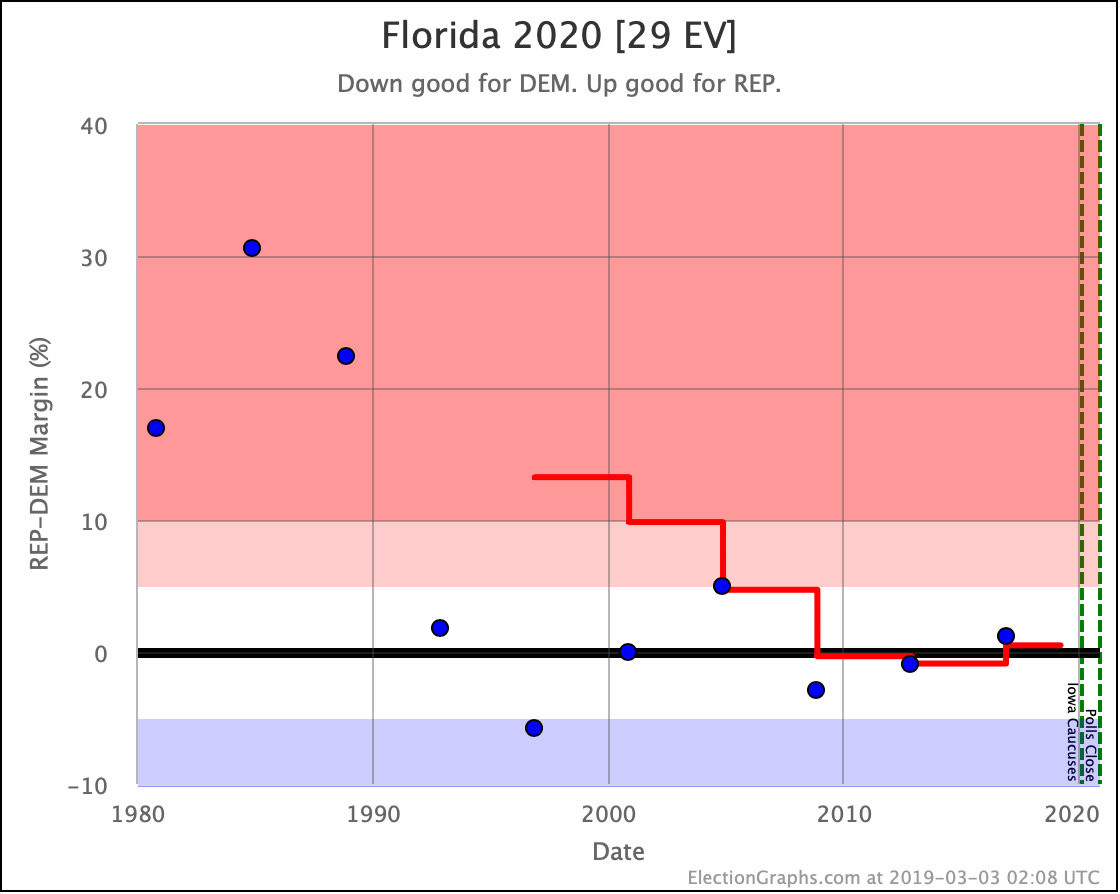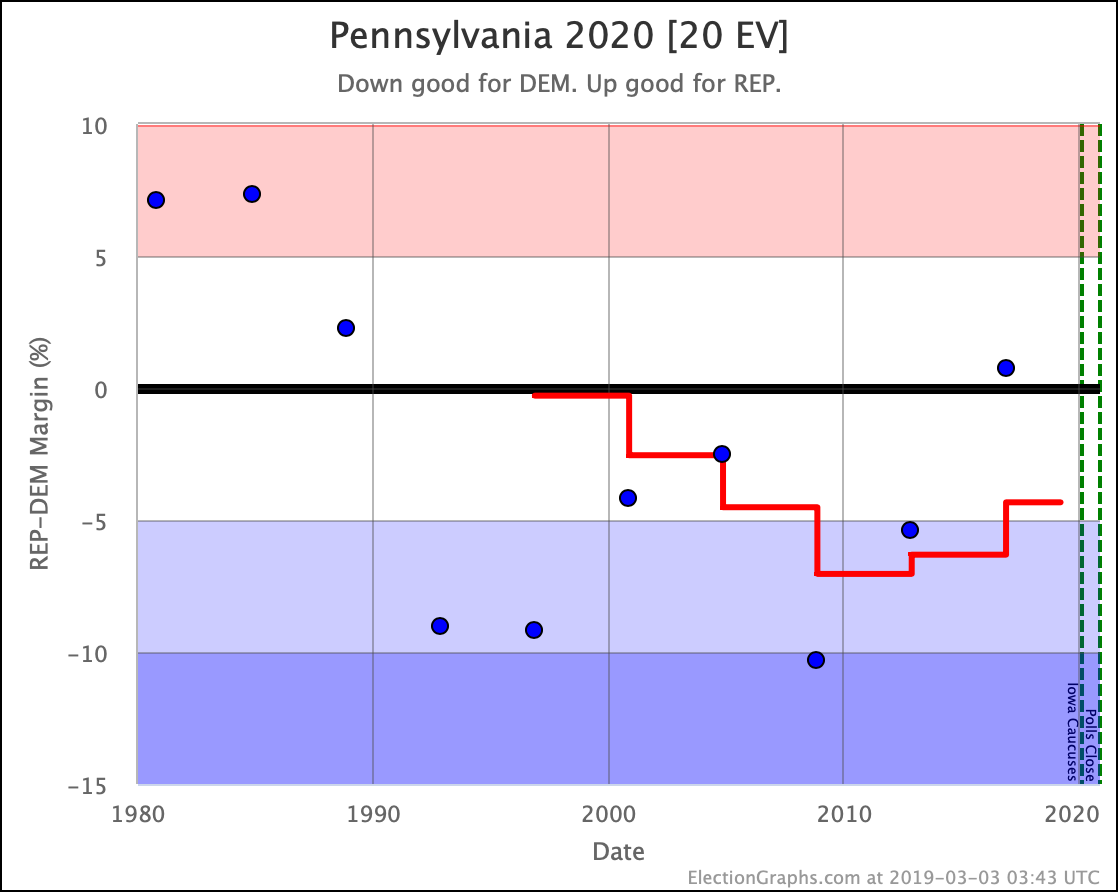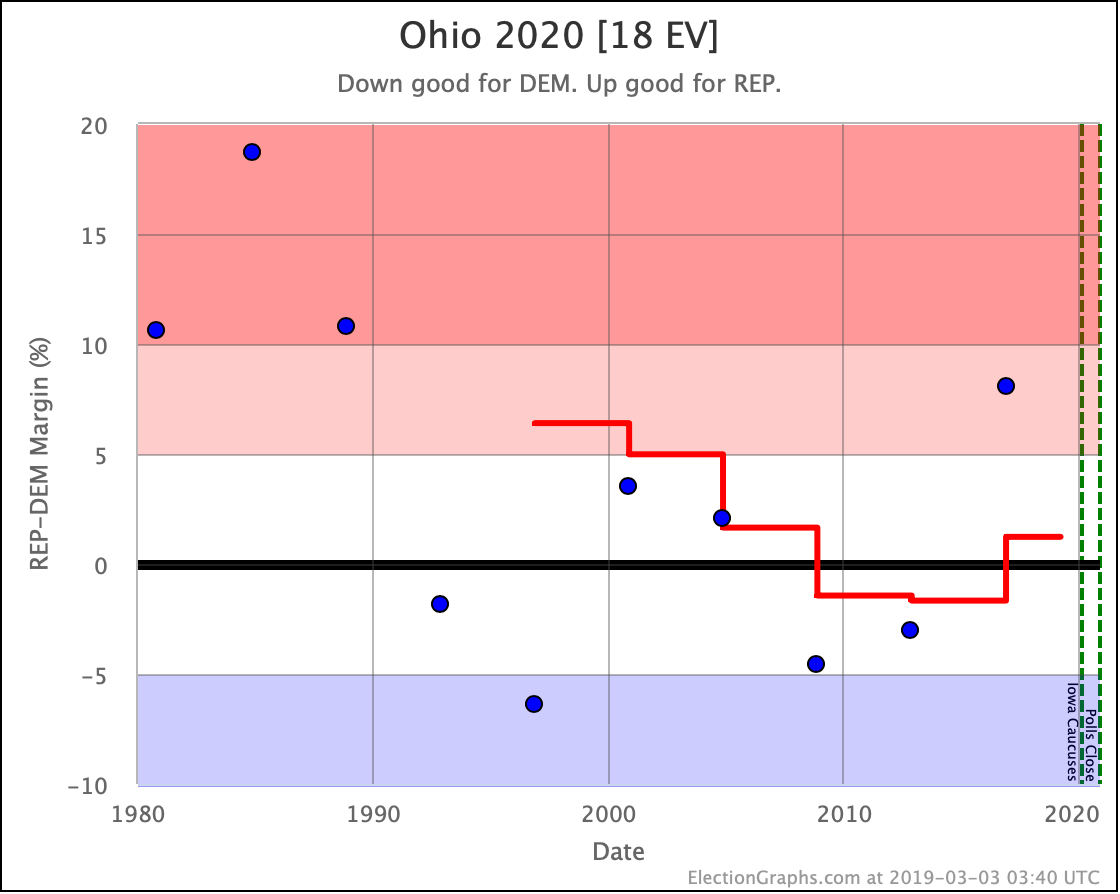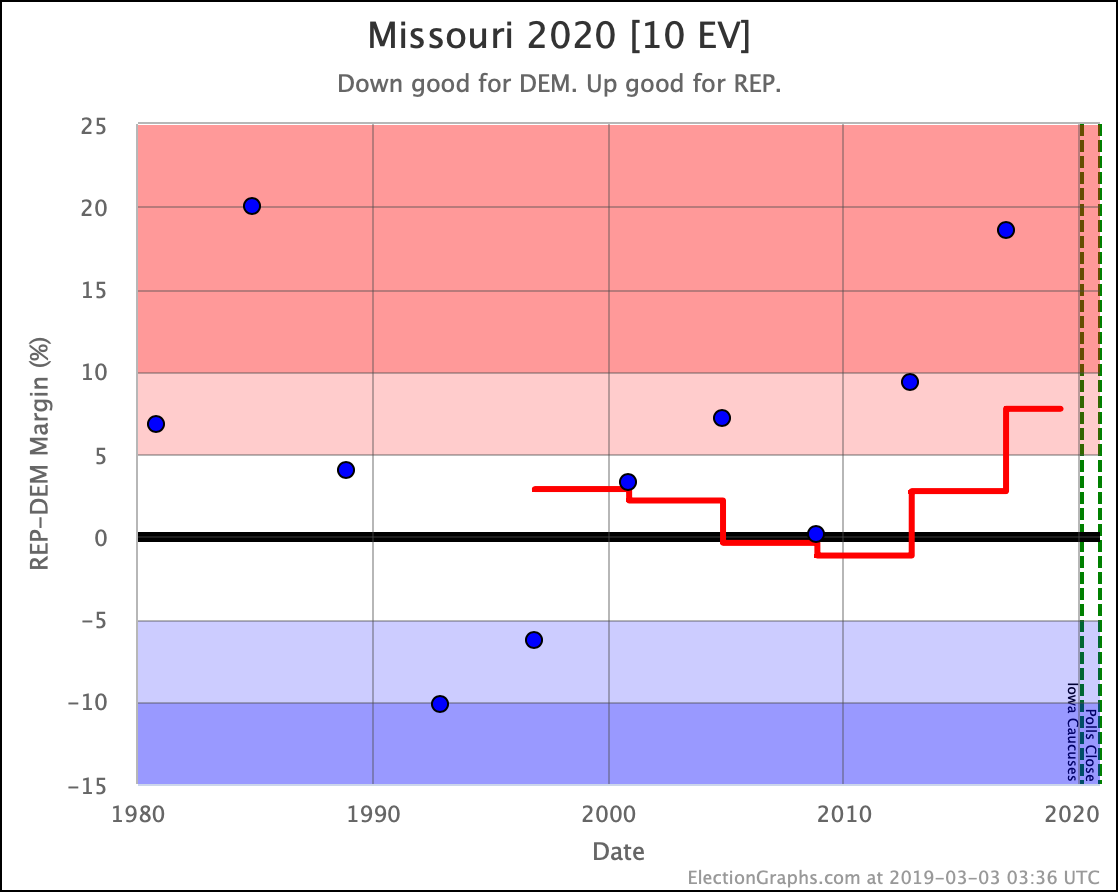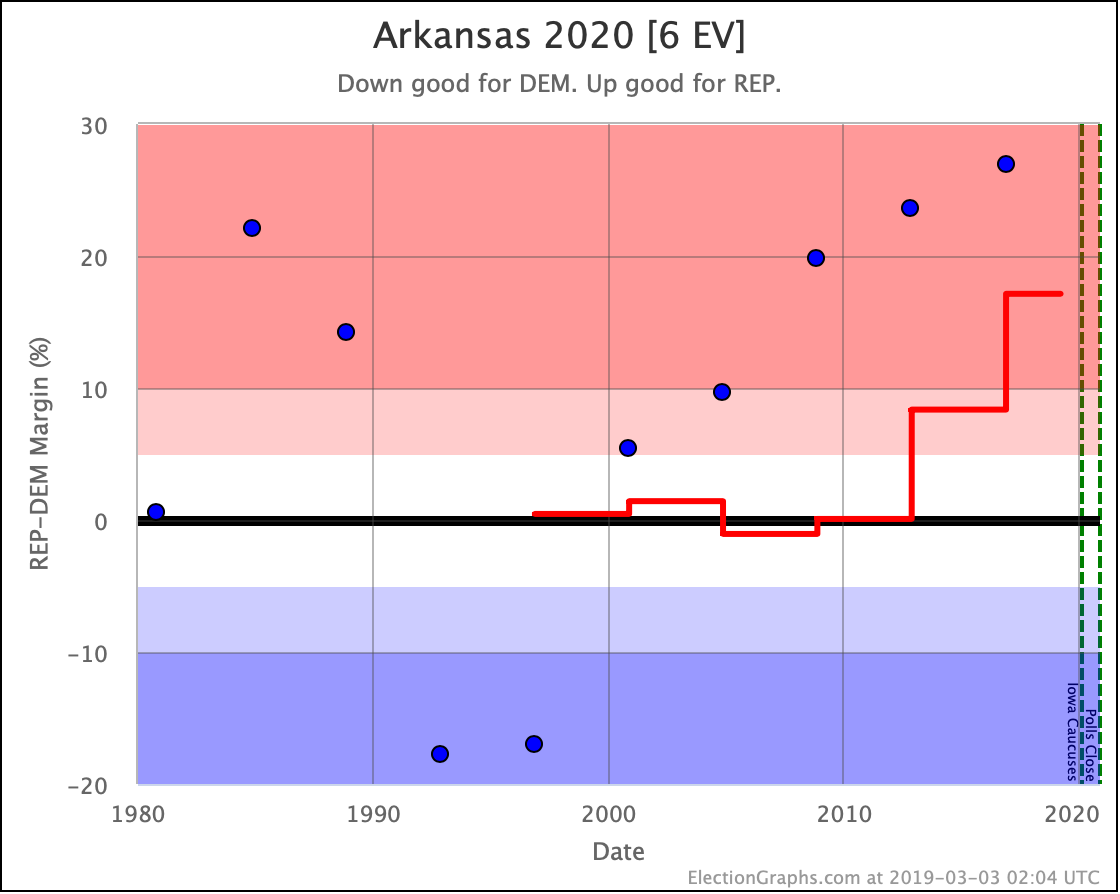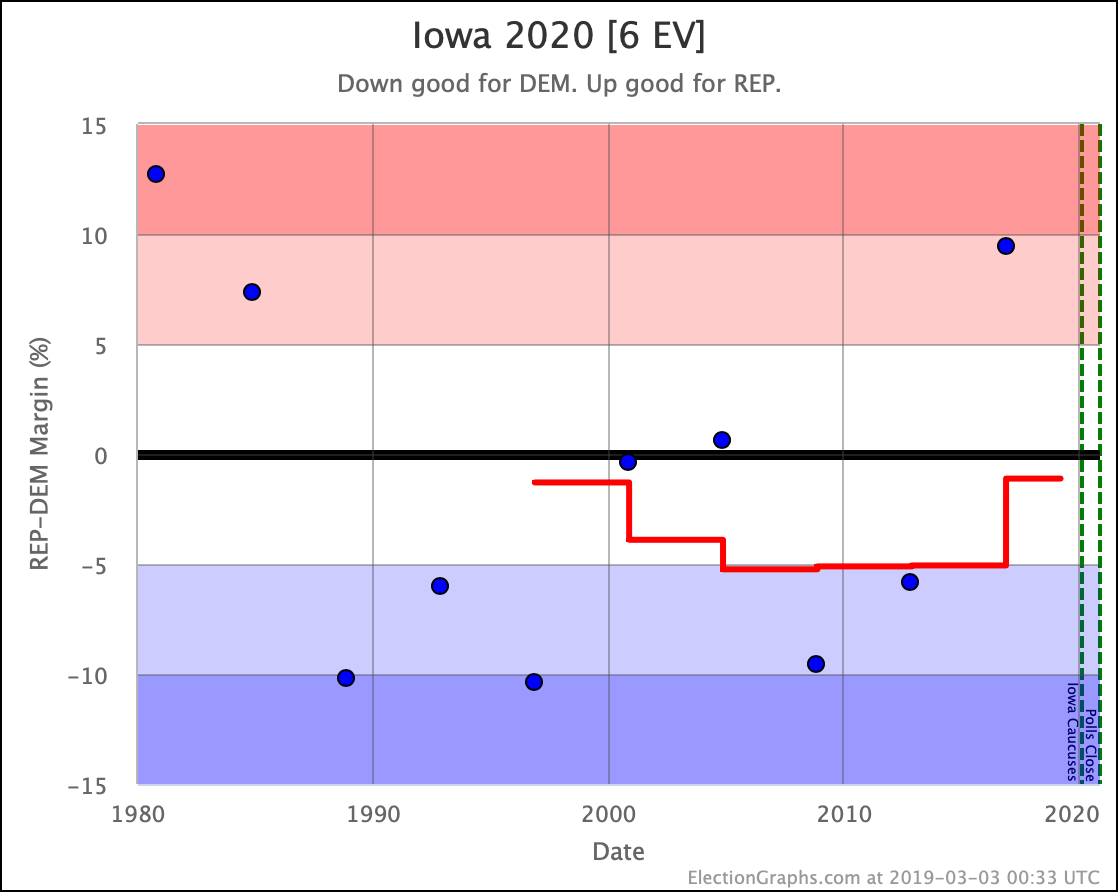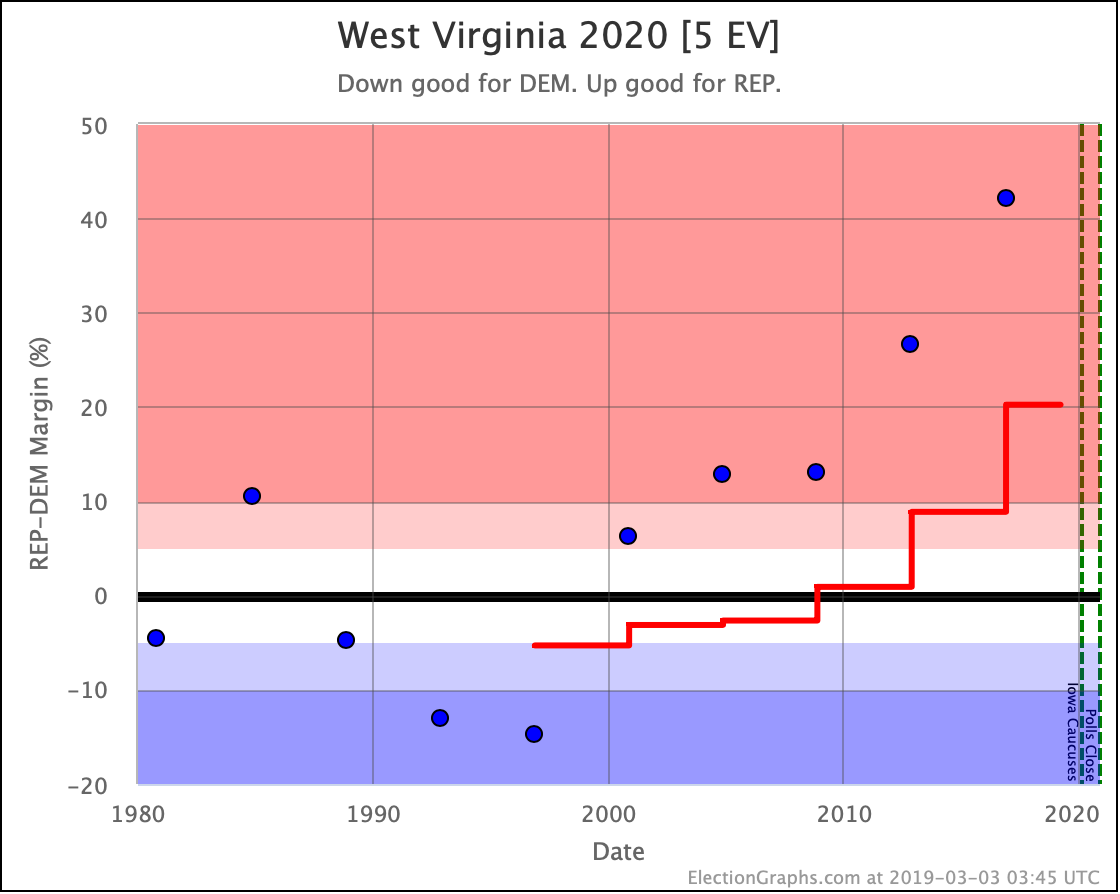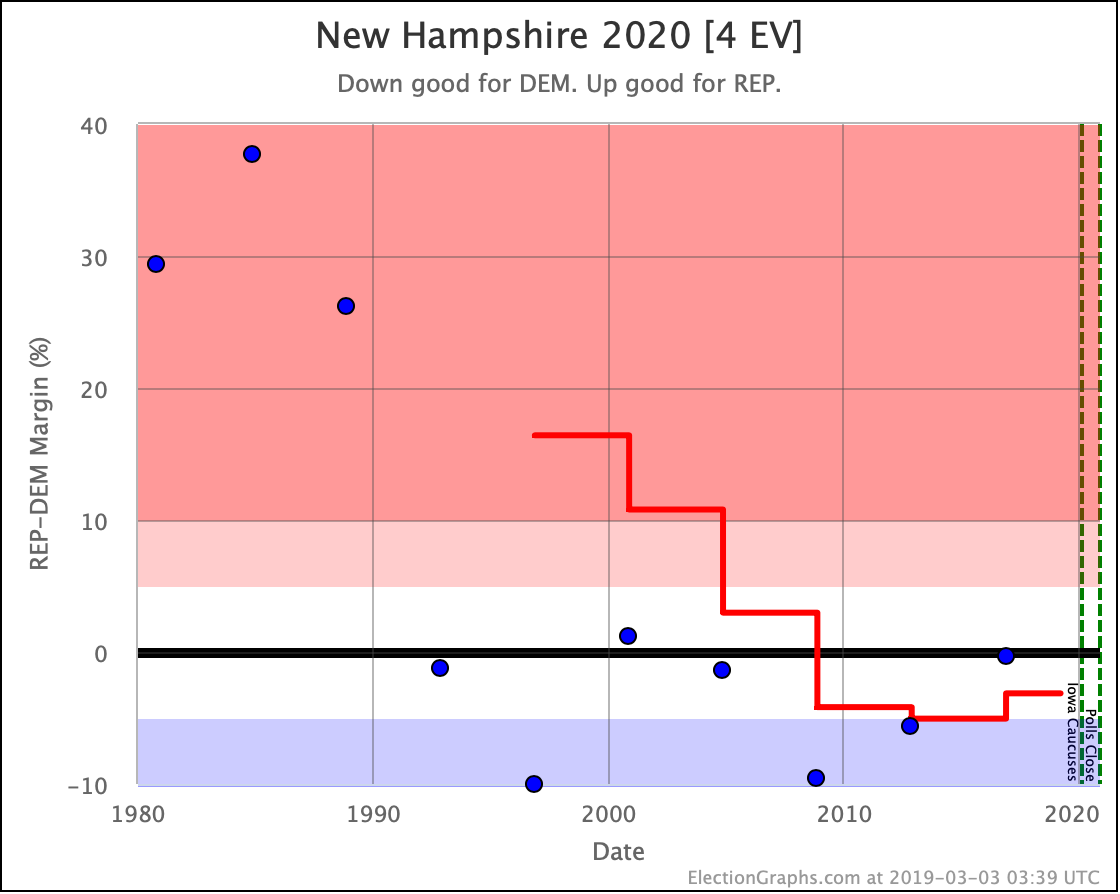Since last week's update, there have been two new polls in Texas, and one each in New Hampshire, Wisconsin, Michigan, and Pennsylvania.
For the six most polled Democrats against Trump (Biden, Sanders, Warren, Buttigieg, Harris, and O'Rourke) this week saw the following category changes:
- Biden vs. Trump state category change: WI has moved from Strong Biden to Weak Biden
- Sanders vs. Trump state category change: MI has moved from Strong Sanders to Weak Sanders
- Warren vs. Trump state category change: PA has moved from Weak Warren to Weak Trump
Looking at how this impacted the national numbers:
In the "Expected Case" where every candidate wins every state they are ahead in, Pennsylvania moving from slightly Warren to slightly Trump means that Warren now only has a 12 electoral vote margin in this scenario.
Biden's lead dropping below 5% in Wisconsin, and Sander's lead dropping below 5% in Michigan meanwhile, improves Trump's "Best Case" (where he wins not only all of the states where he is ahead but also all the ones where he is behind by less than 5%) against both candidates.
As these five states moved around, several tipping points moved as well.
- Sanders vs. Trump tipping point change: Sanders by 1.3% in FL -> Sanders by 1.9% in TX
- O'Rourke vs. Trump tipping point change: O'Rourke by 2.1% in TX -> O'Rourke by 1.8% in TX
- Biden vs. Trump tipping point change: Biden by 4.9% in VA -> Biden by 4.6% in WI
The tipping point changes already make it clear that this was a mixed week. Some Democrats improved their positions against Trump; some moved in the opposite direction. This mix in the situation exists despite all of the actual category changes being in Trump's direction.
The movement within categories that starts to be shown by the tipping point is something we can see even better if we switch to the probabilistic simulation view:
| Dem | 8 Sep | 15 Sep | 𝚫 |
| Biden | 99.9% | 99.8% | -0.1% |
| Sanders | 95.8% | 96.9% | +1.1% |
| O'Rourke | 80.0% | 80.8% | +0.8% |
| Warren | 71.1% | 69.0% | -2.1% |
| Buttigieg | 67.1% | 67.0% | -0.1% |
| Harris | 64.3% | 65.7% | +1.4% |
There were a lot of mixed results in a lot of states this week. But when you balance it all out in terms of the odds of winning in the Electoral College:
- Harris, Sanders, and O'Rourke strengthened against Trump
- Warren, Biden, and Buttigieg weakened against Trump
Another way of looking at this is the median margins in the Monte Carlo simulations for each of the candidate combinations:
Unlike the categorization "Expected Case" view, where Harris narrowly loses to Trump, all six Democrats lead Trump in the probabilistic "Median Case."
Warren, Buttigieg, and Harris all lead by 30 or less electoral votes, though. In electoral vote terms, that is a very tight race. Any state with more than 15 electoral votes slipping to the other side of the centerline would switch the outcome.
O'Rourke, Sanders, and Biden, each, in turn, have more of a margin than the candidate before, so additional buffer. They can afford for more to go wrong before they lose.
Now, let's look at each of the five states that got polled this week.
Of the two polls in Texas, one matched other recent surveys and was mostly favorable to the Democrats. The other showed clear Republican leads.
The net impact of the two polls on the averages was that Biden, Sanders, Warren, and Harris continued improving in Texas, while Buttigieg and O'Rourke got a little weaker.
You do get one piece of oddness, though. I use the methodology I described in my Polling Error vs. Final Margin post to translate margins into odds of winning. When I use the straight-up unsmoothed numbers from the 2008 to 2016 elections, there are a few places where the relationship between the polling average and the win odds are not monotonic.
This behavior means that even though O'Rourke's polling average dropped from a 2.1% lead to a 1.8% lead, my computed "odds of winning Texas" for O'Rourke INCREASED from 66.4% to 68.2%.
Now, I could have smoothed the handful of places where this non-monotonic behavior occurs out of existence. But I chose when I first set up the odds based view to use the numbers that came straight out of my analysis of the previous election results without any further manipulation.
Given the historical data and the methodology I used, a 1.8% Democratic lead is indeed slightly more likely to win than a 2.1% Democratic lead. Of course, this does seem a little crazy and is quite possibly just an example of overfitting.
But it isn't a huge difference and occurs at only a few specific margin zones, so I'll leave it be.
We still end up with a situation where three of the six Democrats are leading in Texas though, and another two make it close.
Texas continues to be one of the most important states to watch.
Sanders improved slightly in Pennsylvania.
Biden's lead deteriorated significantly.
Warren lost her lead to Trump.
The poll did not include the others.
Biden, Sanders, and Warren all weaken against Trump in Michigan with this week's update.
The poll did not include the others.
Warren got stronger in Wisconsin.
Biden and Sanders got weaker.
The poll did not include the others.
Biden, Sanders, Warren, and Harris all got weaker in New Hampshire with the latest polling.
The poll did not include Buttigieg or O'Rourke.
And that's it for this week's update.
415.6 days until polls start to close.
For more information:
This post is an update based on the data on the Election Graphs Electoral College 2020 page. Election Graphs tracks a poll-based estimate of the Electoral College. The charts, graphs, and maps in the post above are all as of the time of this post. Click through on any image to go to a page with the current interactive versions of that chart, along with additional details.
Follow @ElectionGraphs on Twitter or Election Graphs on Facebook to see announcements of updates. For those interested in individual poll updates, follow @ElecCollPolls on Twitter for all the polls as I add them. If you find the information in these posts informative or useful, please consider visiting the donation page.

